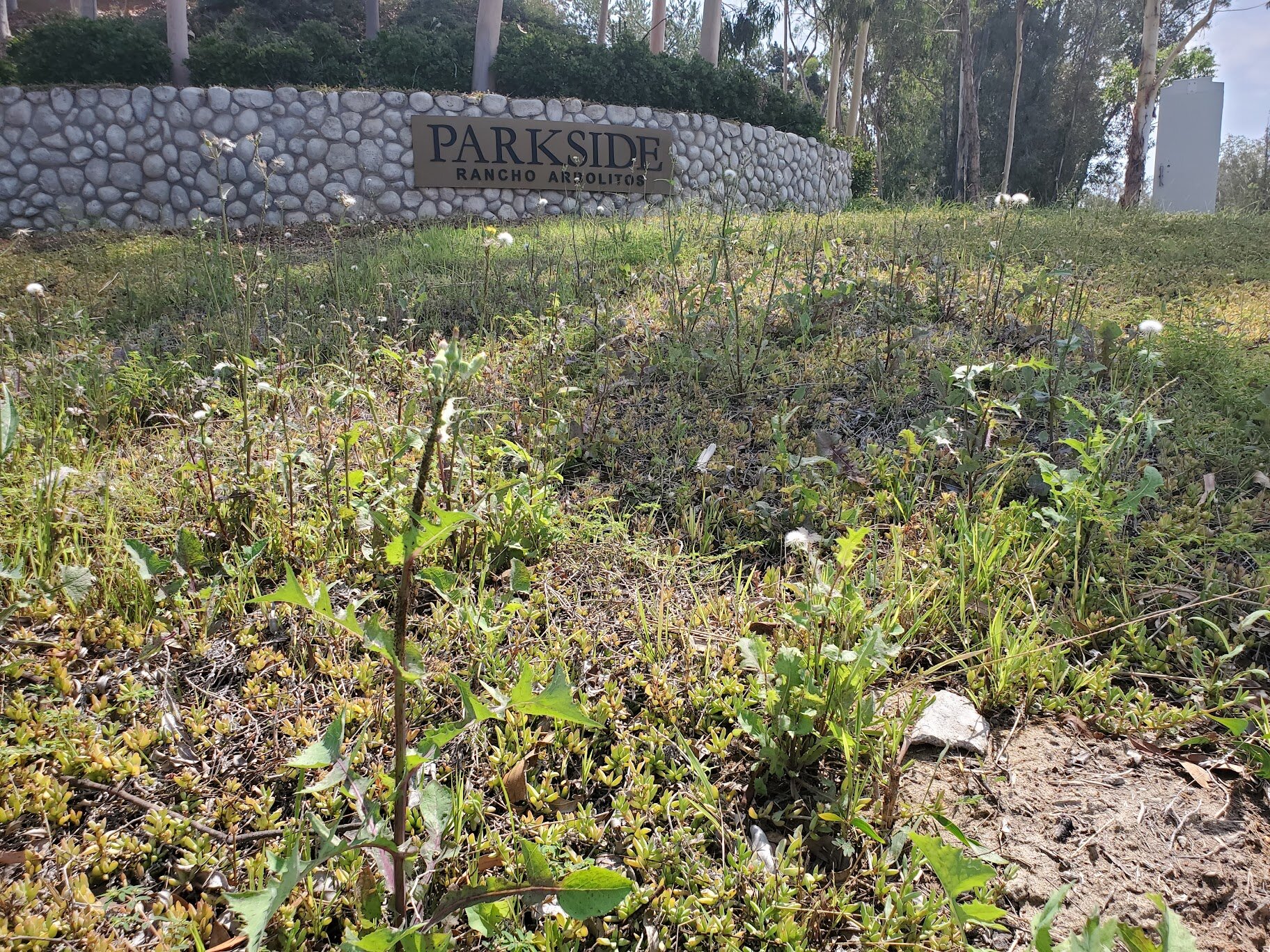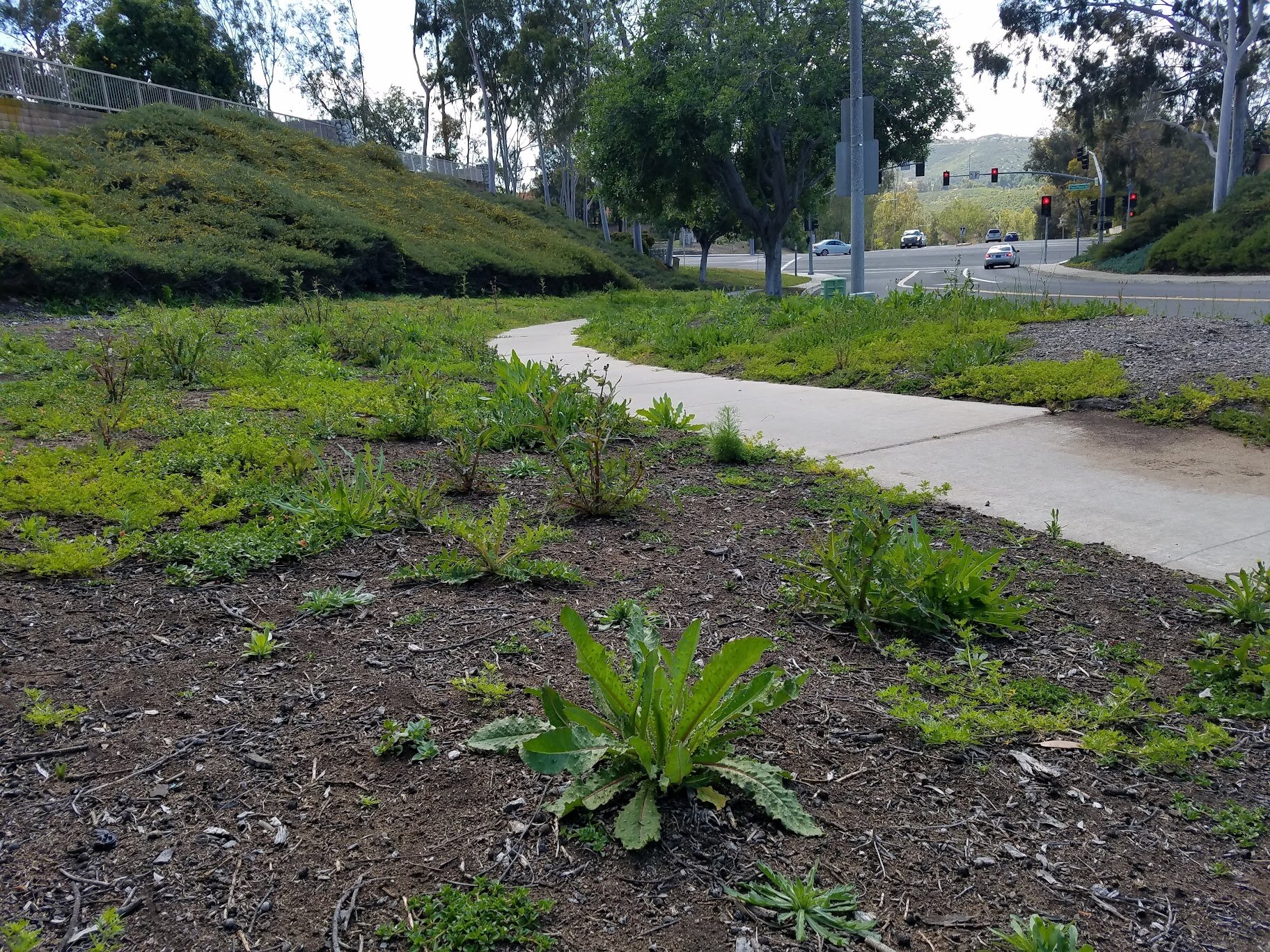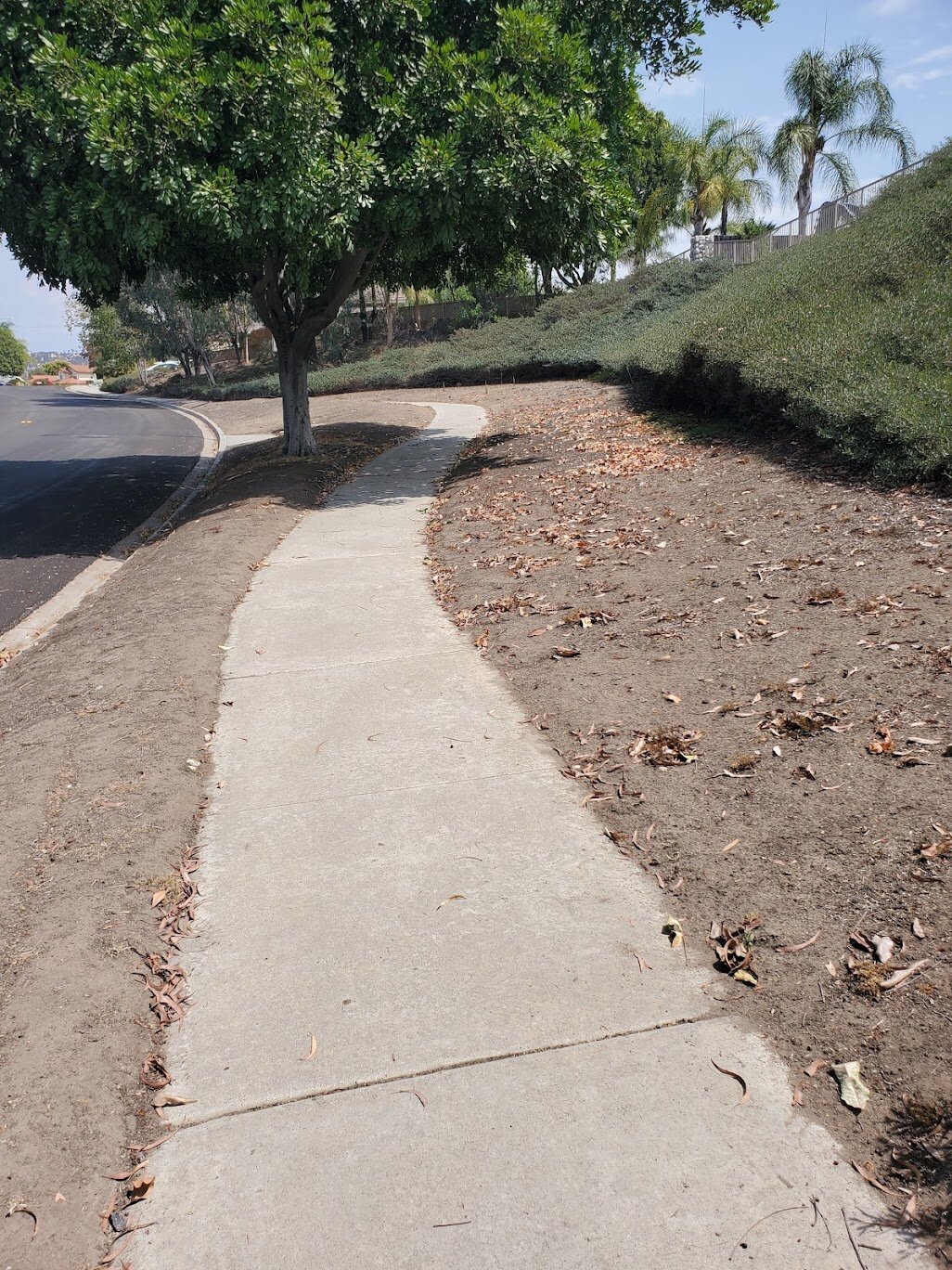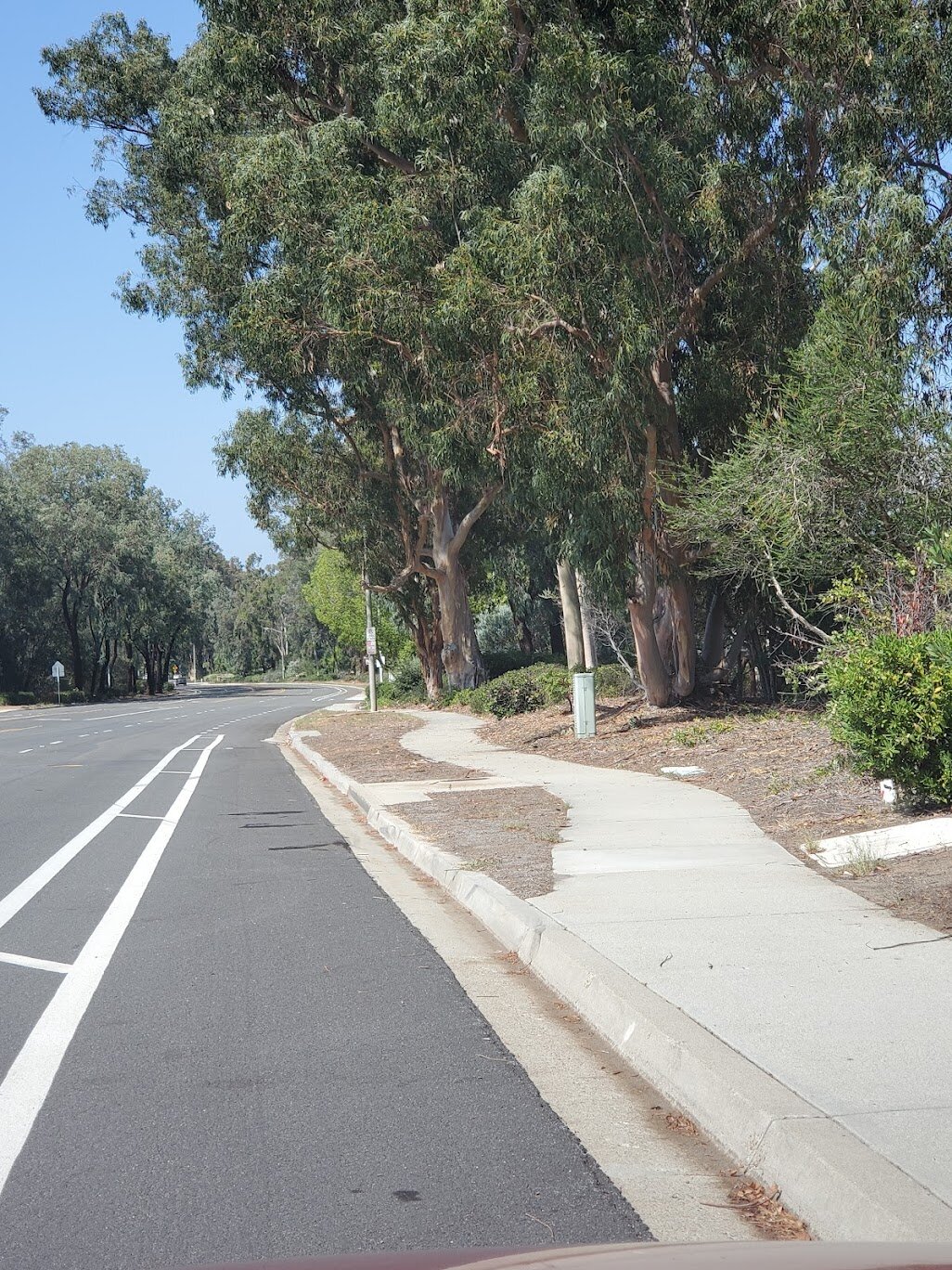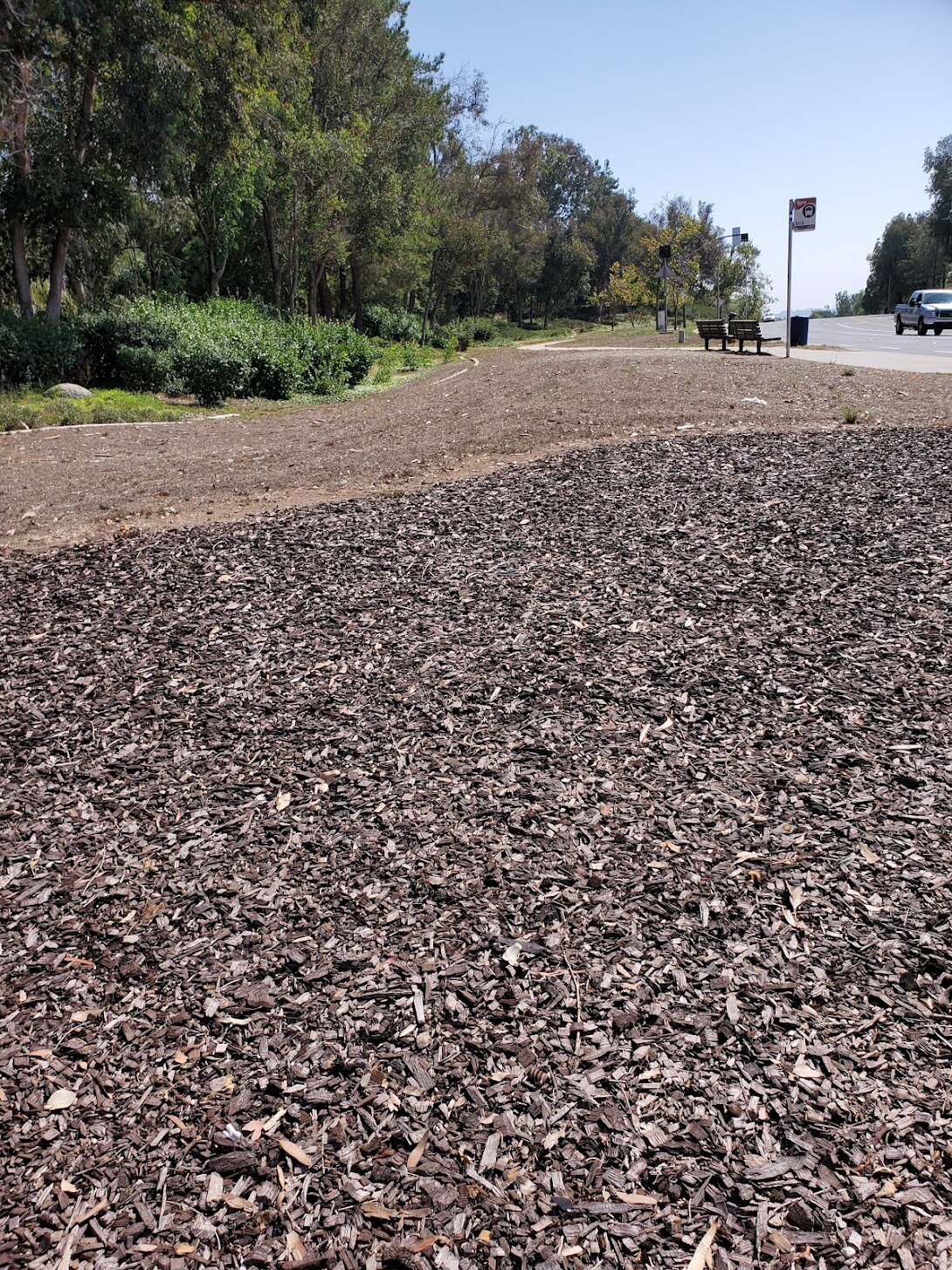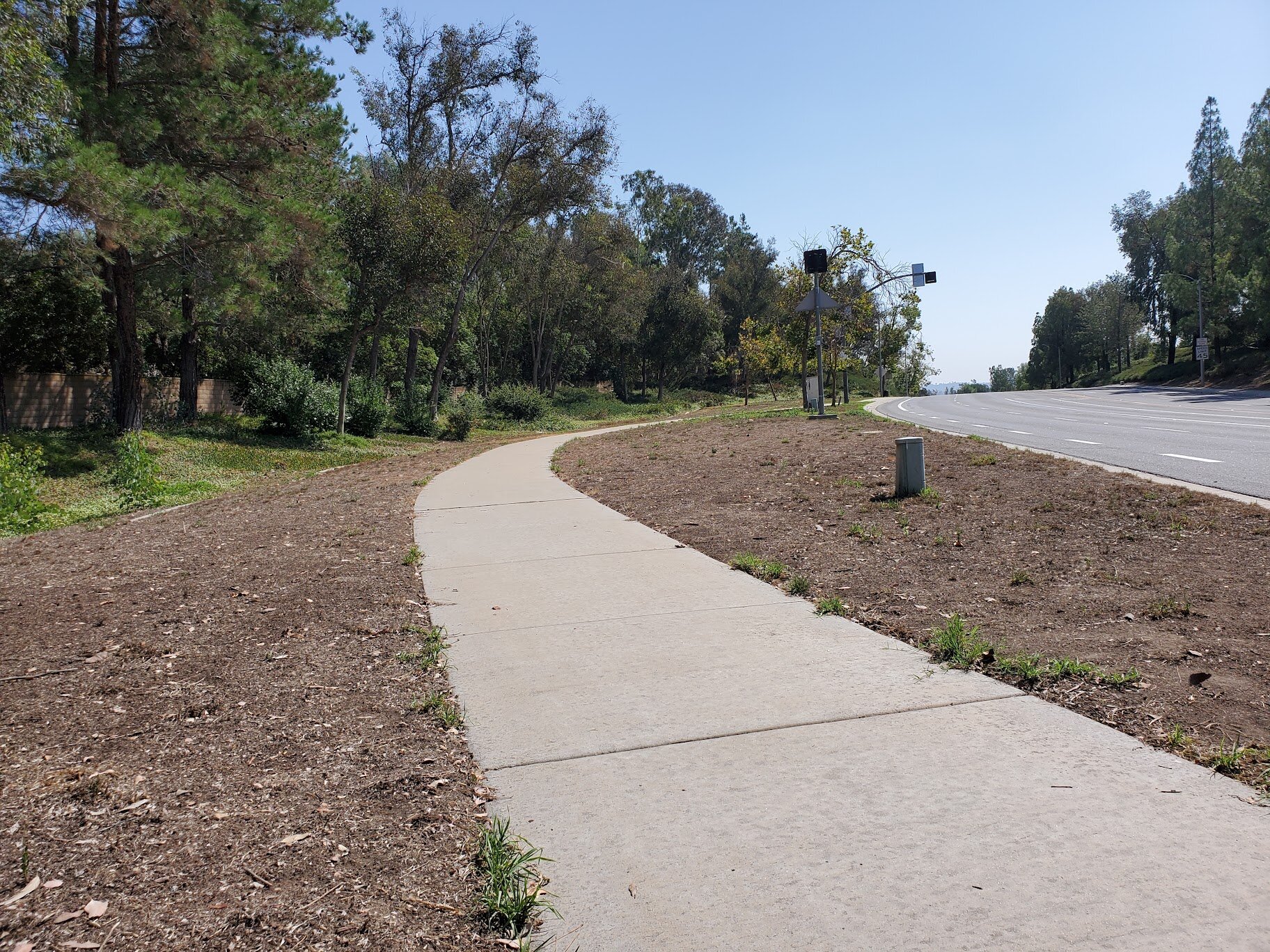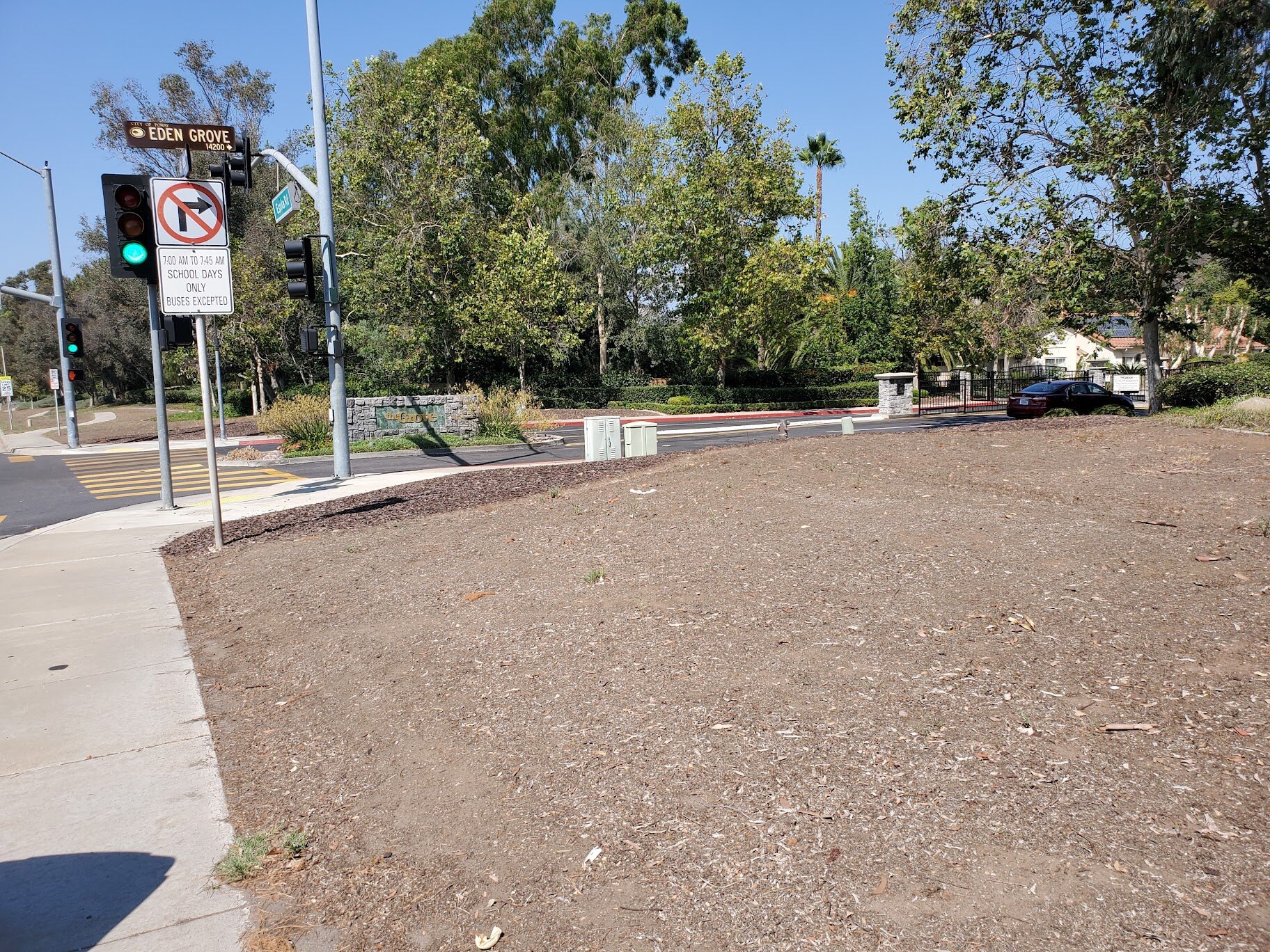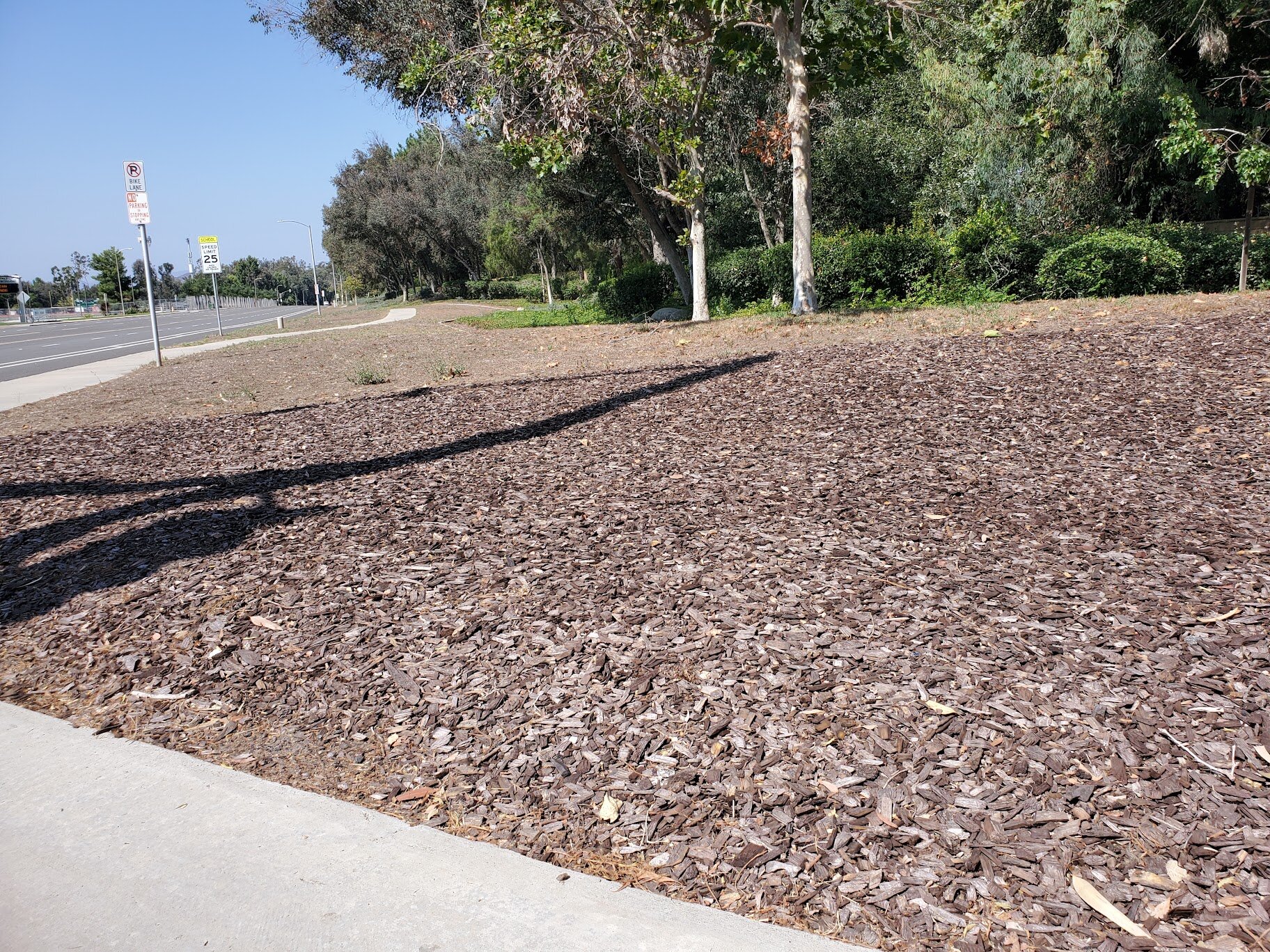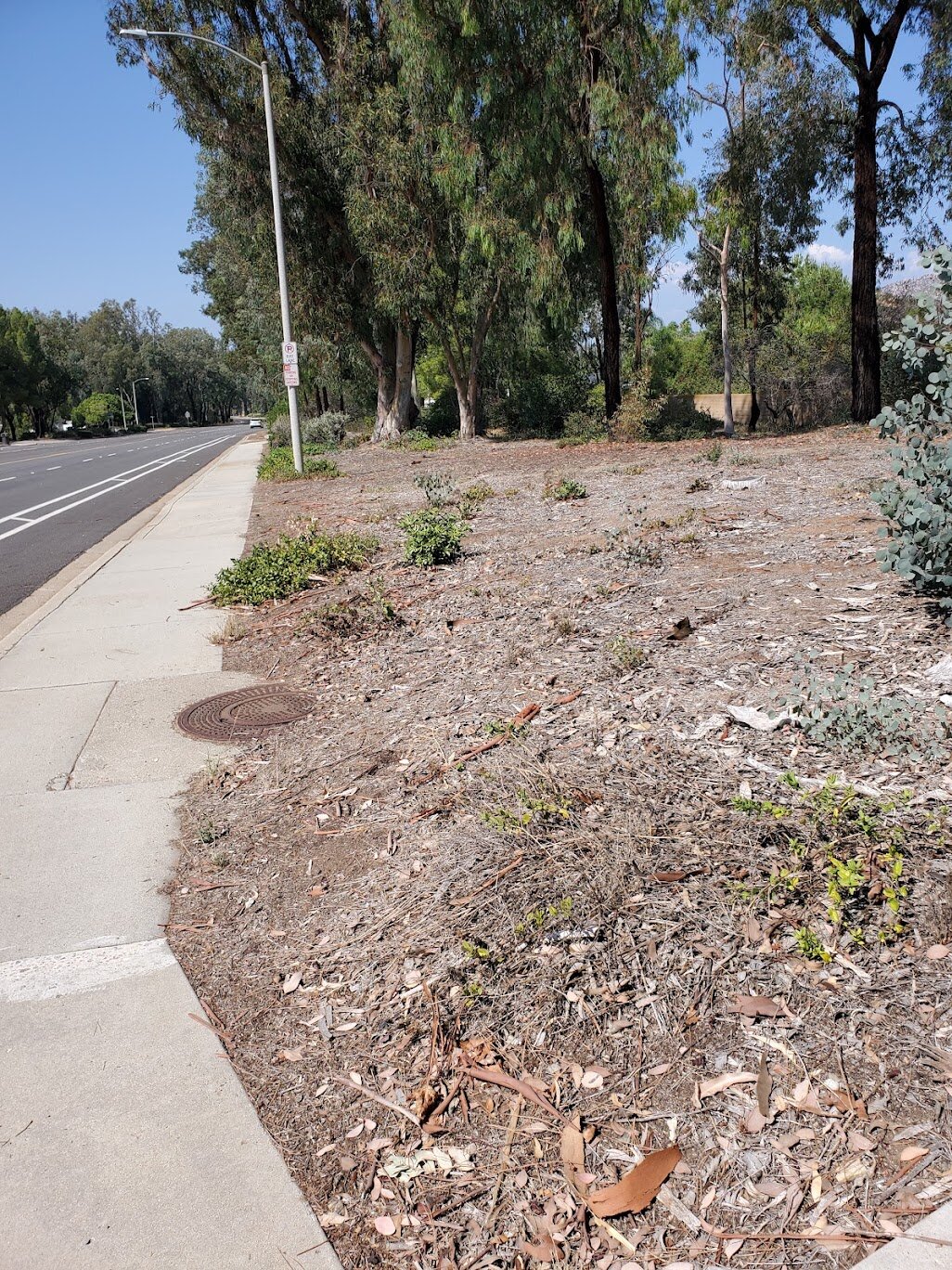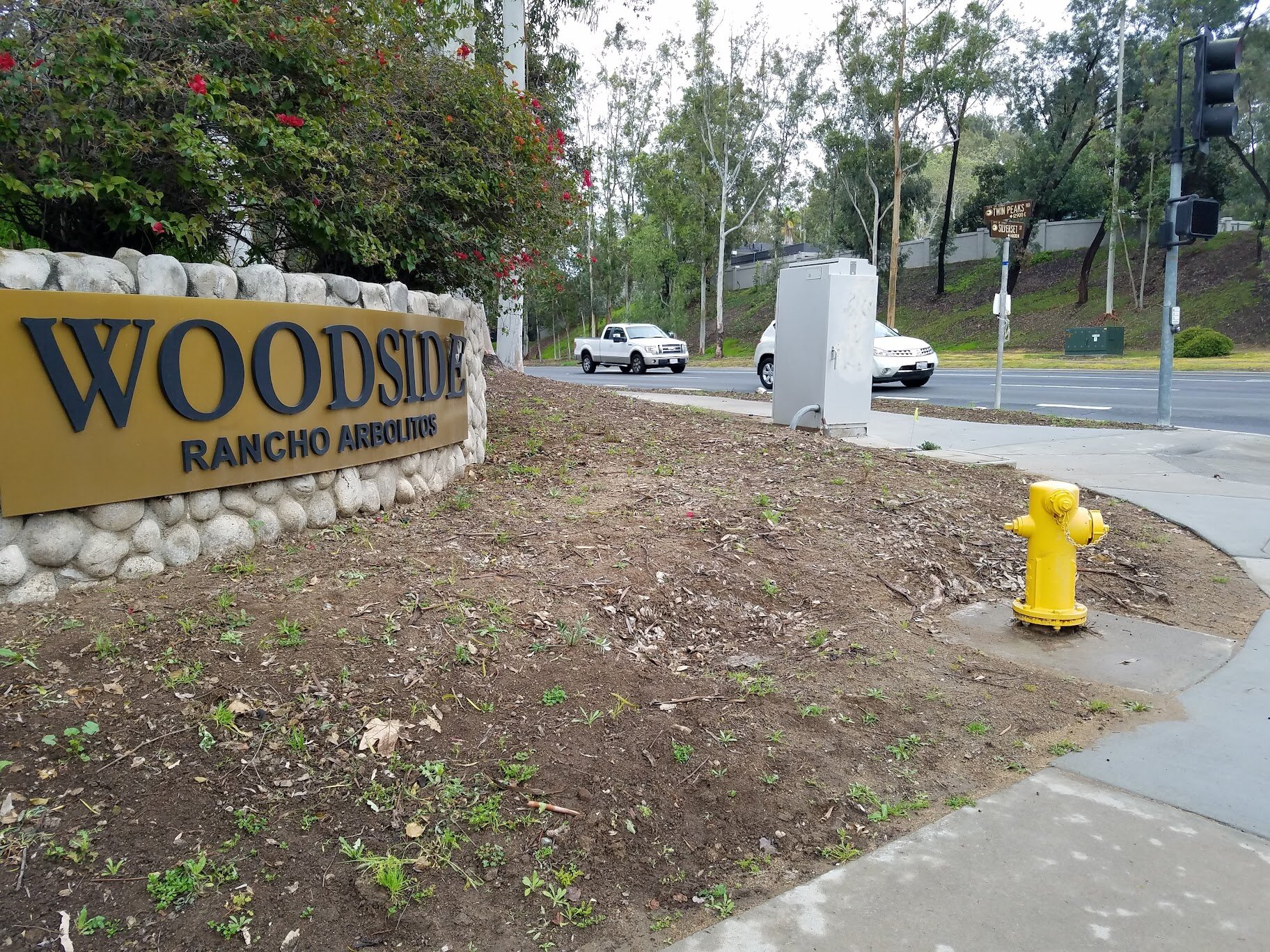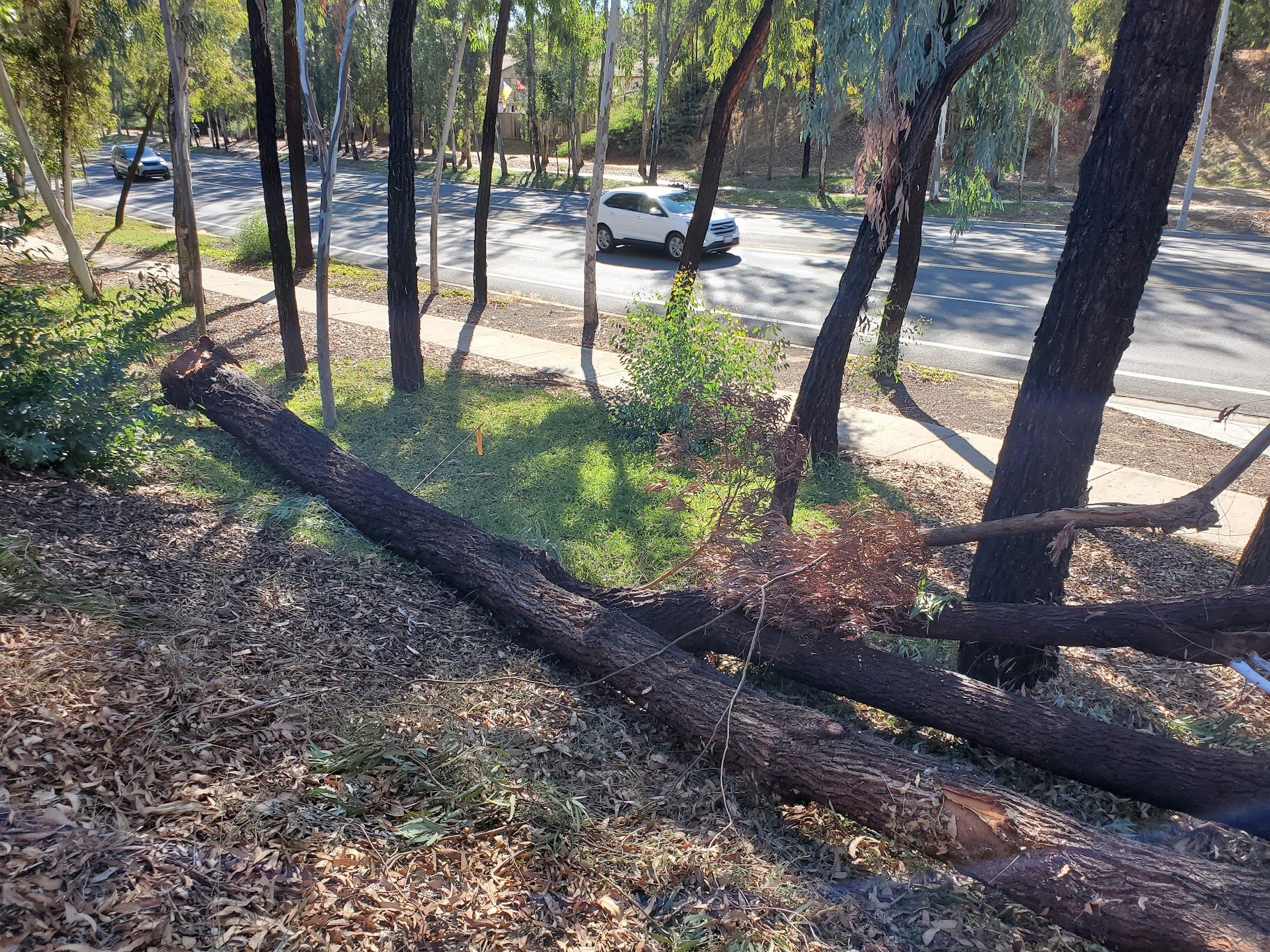
Neighbors Making a Difference.
Check Out the Photos Below
Current Status of Landscaping and Trees in the LMDs
The health and maintenance of the landscaping and trees at neighborhood entrances and along the roadways in LMD 83-1 (Twin Peaks Road) and LMD 86-1 (Espola Road) has deteriorated over the past decade as a result of rising maintenance costs and stagnant revenues that support the LMDs. The LMD Advisory Group believes we can do better than this!
Check out the existing state of the trees and landscaping in the LMDs by scrolling through the photos below. The City of Poway is preparing a Landscape Master Plan to create landscape rehabilitation concepts for the neighborhood entrances and roadway areas in LMD 83-1 and LMD 86-1. Public open houses will be held in Spring 2022 to share these new landscape concepts and receive input.
Tree Debris
There are over 3800 hundred eucalyptus trees along Twin Peaks and Espola roads. Eucalyptus trees are messy and shed lots of leaves, bark, seed pods, oils, and branches. The amount of falling tree debris has overwhelmed the ability of the City and LMDs to manage it and has become both an eyesore and a fire hazard as ground debris helps fuel fires.
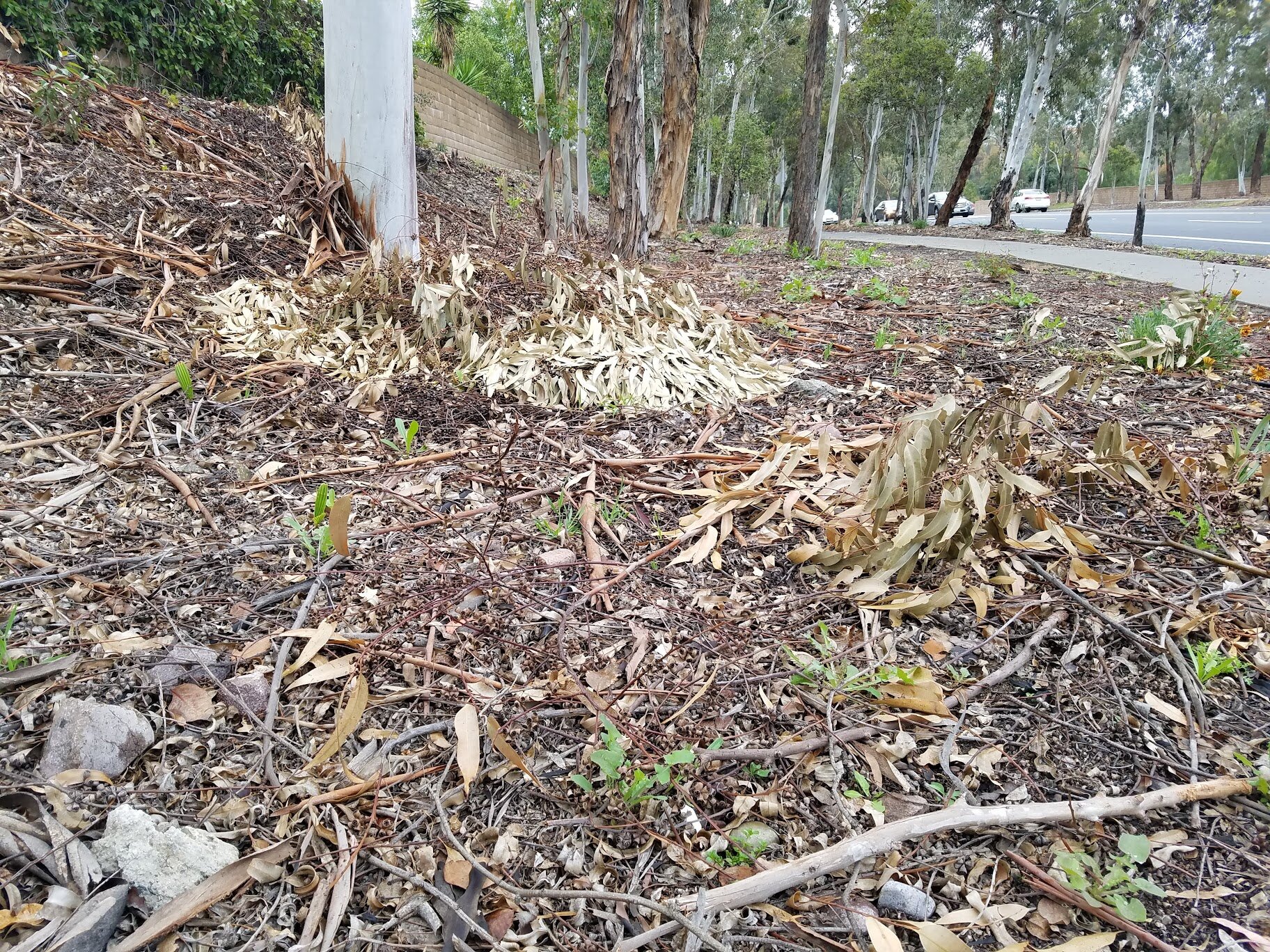
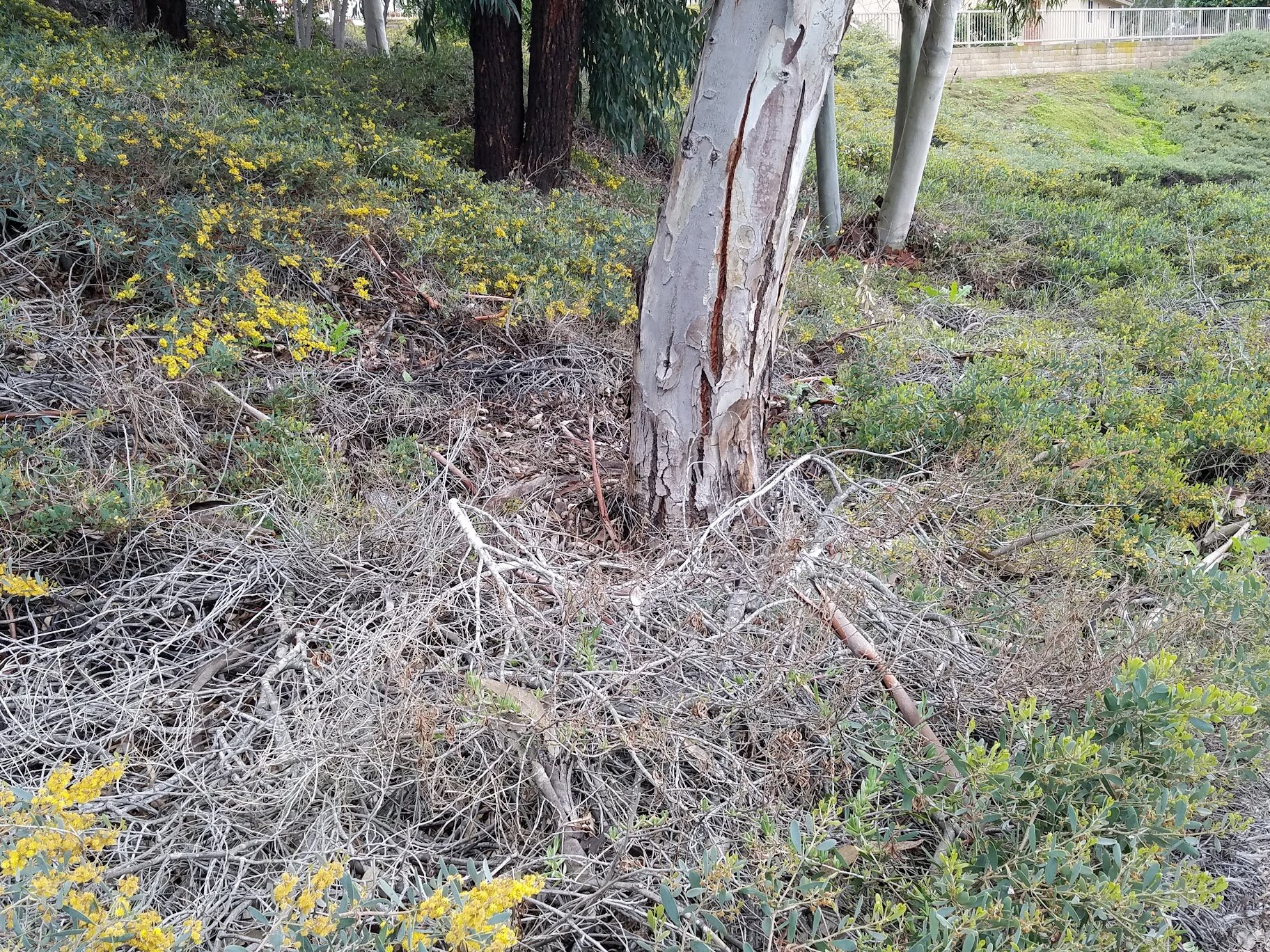
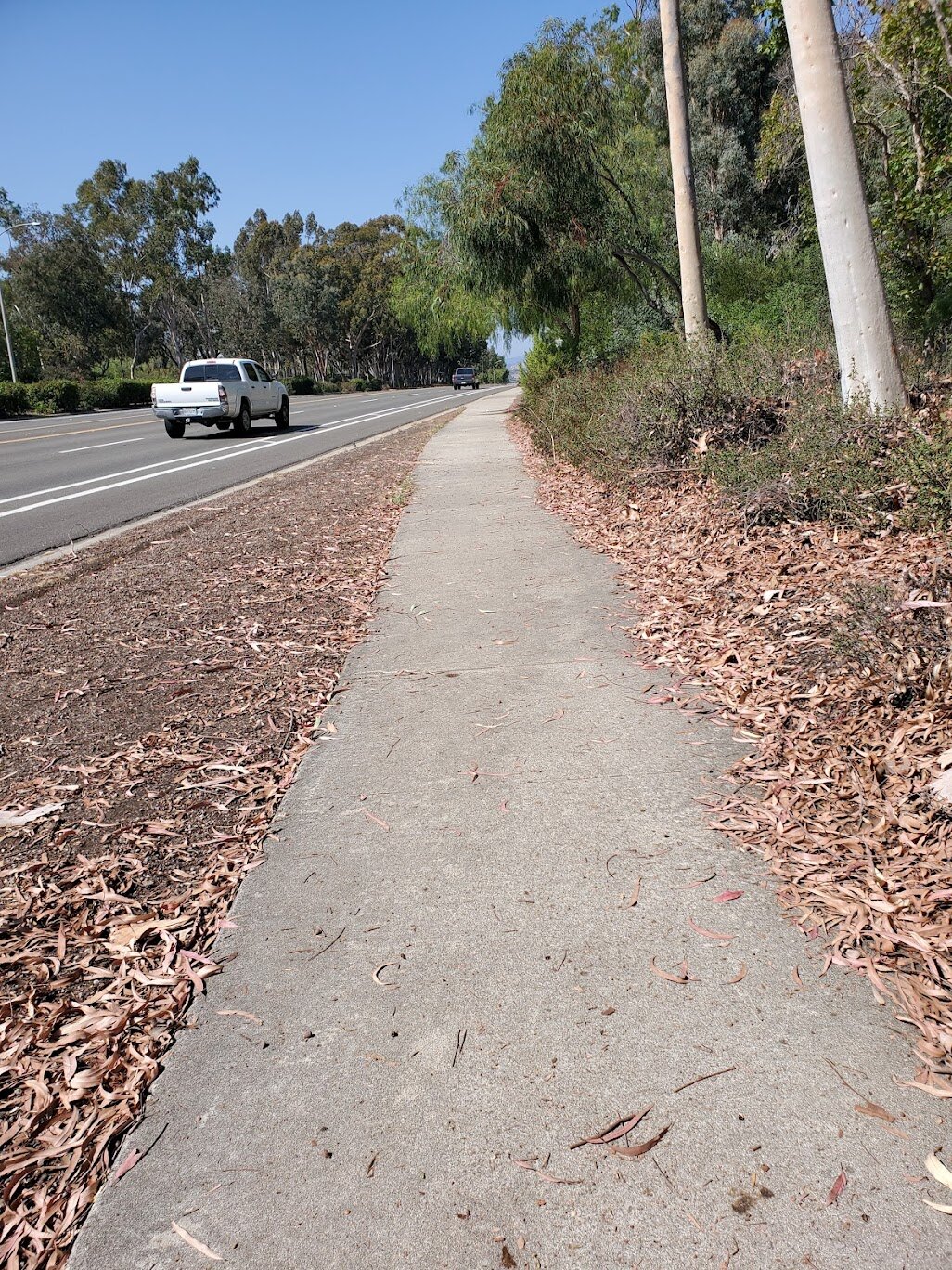
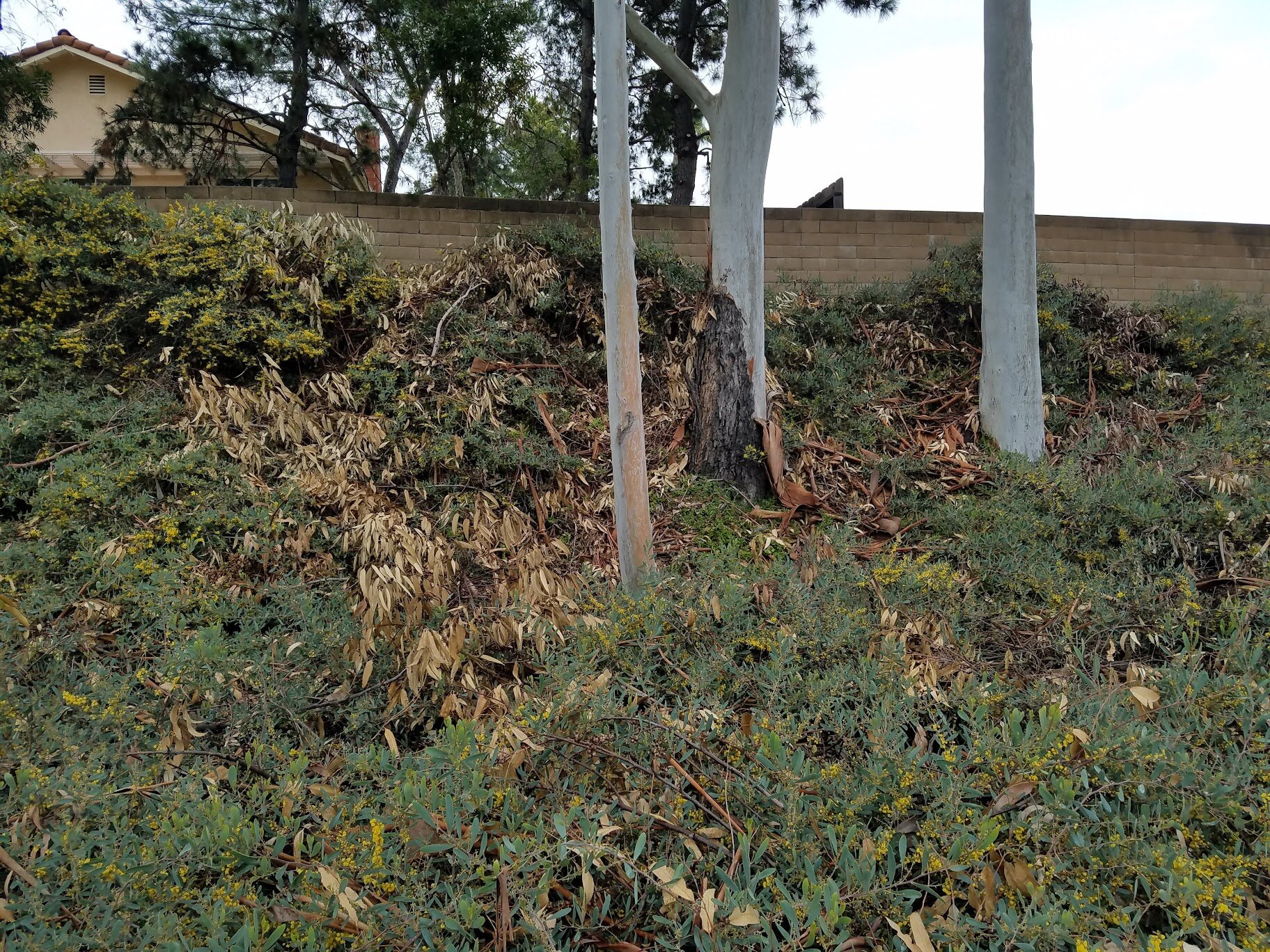
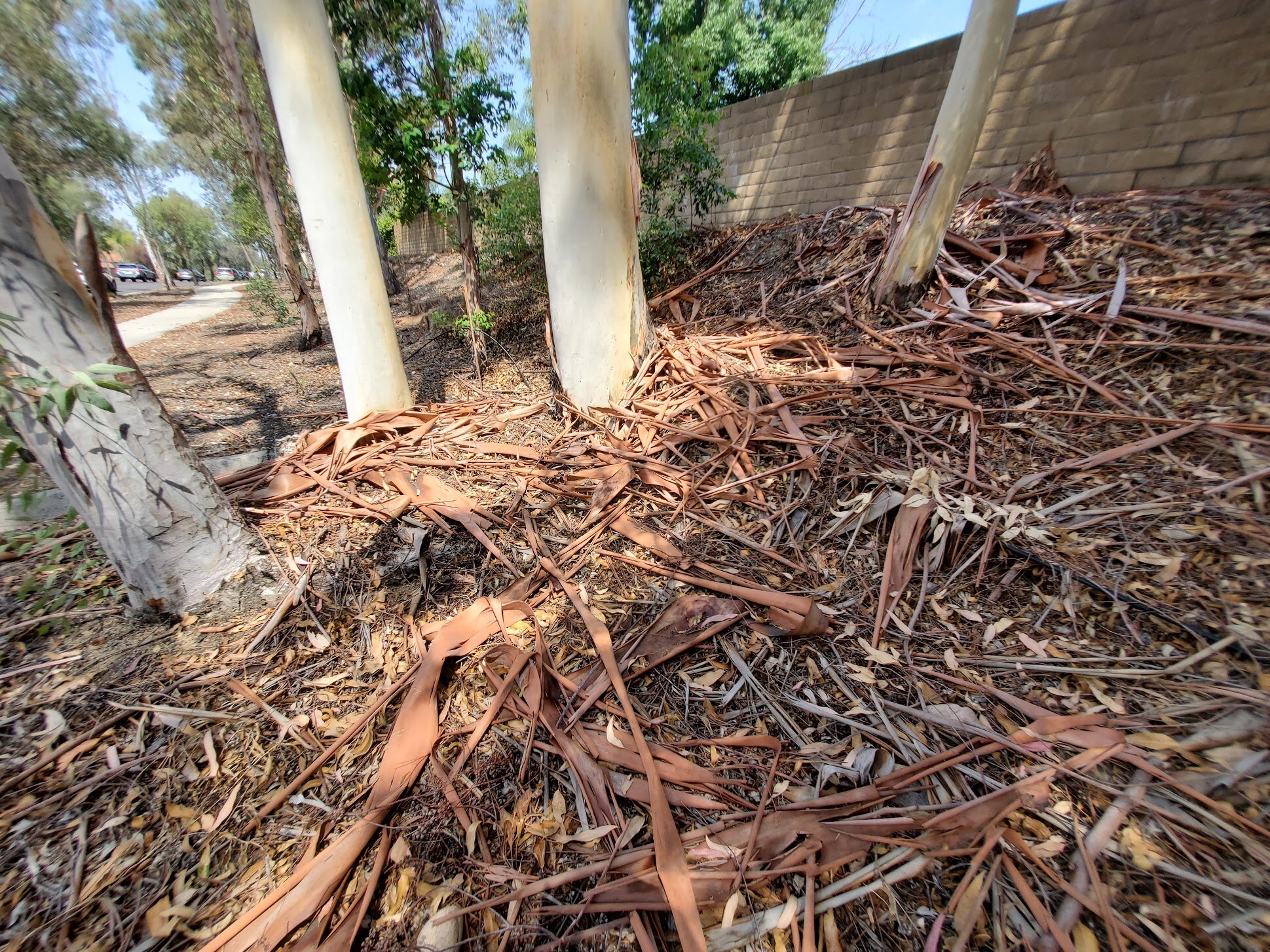
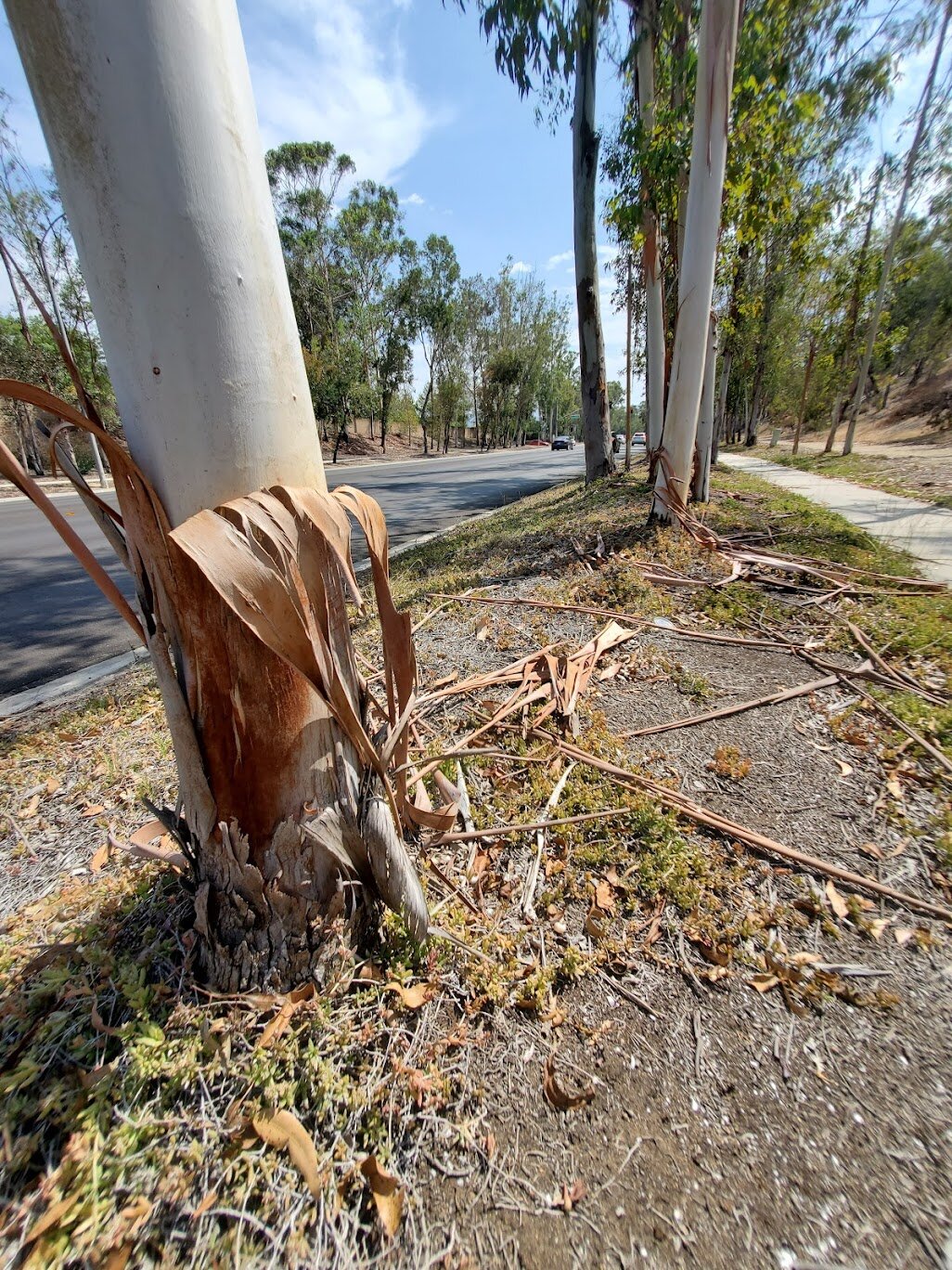
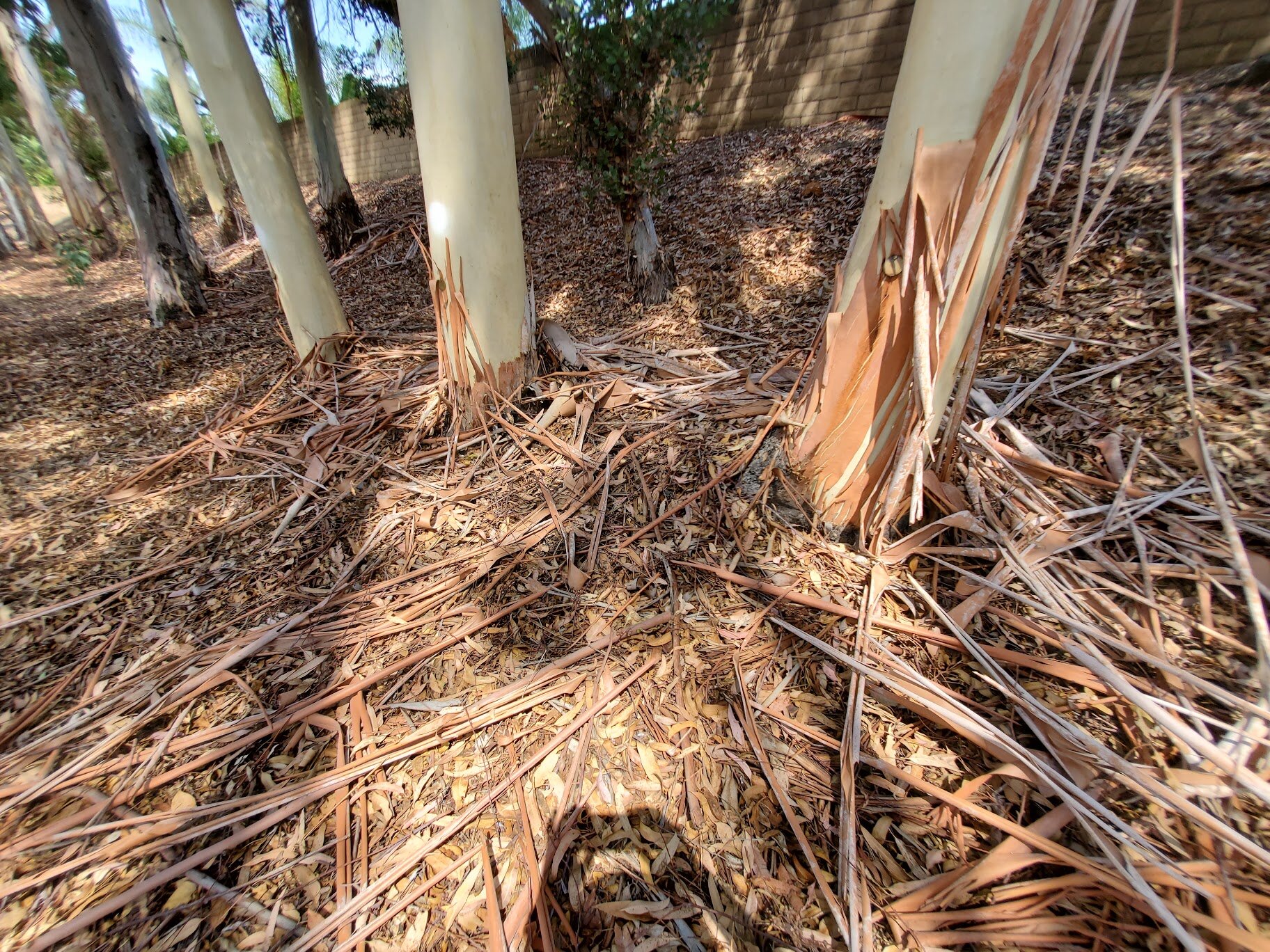
Falling Branches
Eucalyptus tree branches are notoriously weak and break and fall easily, particularly in windy conditions. Eucalyptus trees also drop branches during drought to prevent death of the tree by allowing the remaining branches and trunk to have more moisture. Falling branches are a danger to those who walk, drive or live near eucalyptus trees.
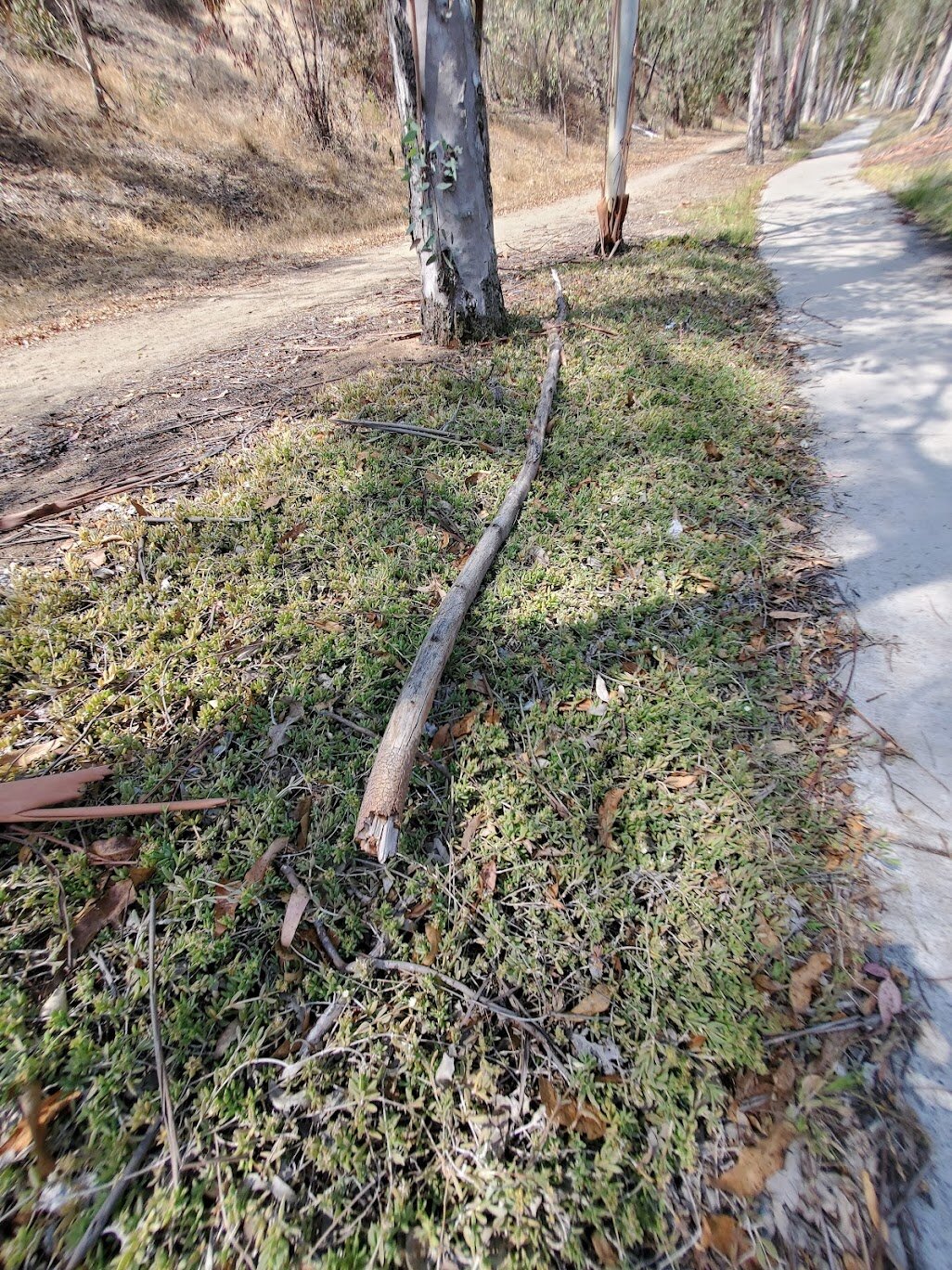
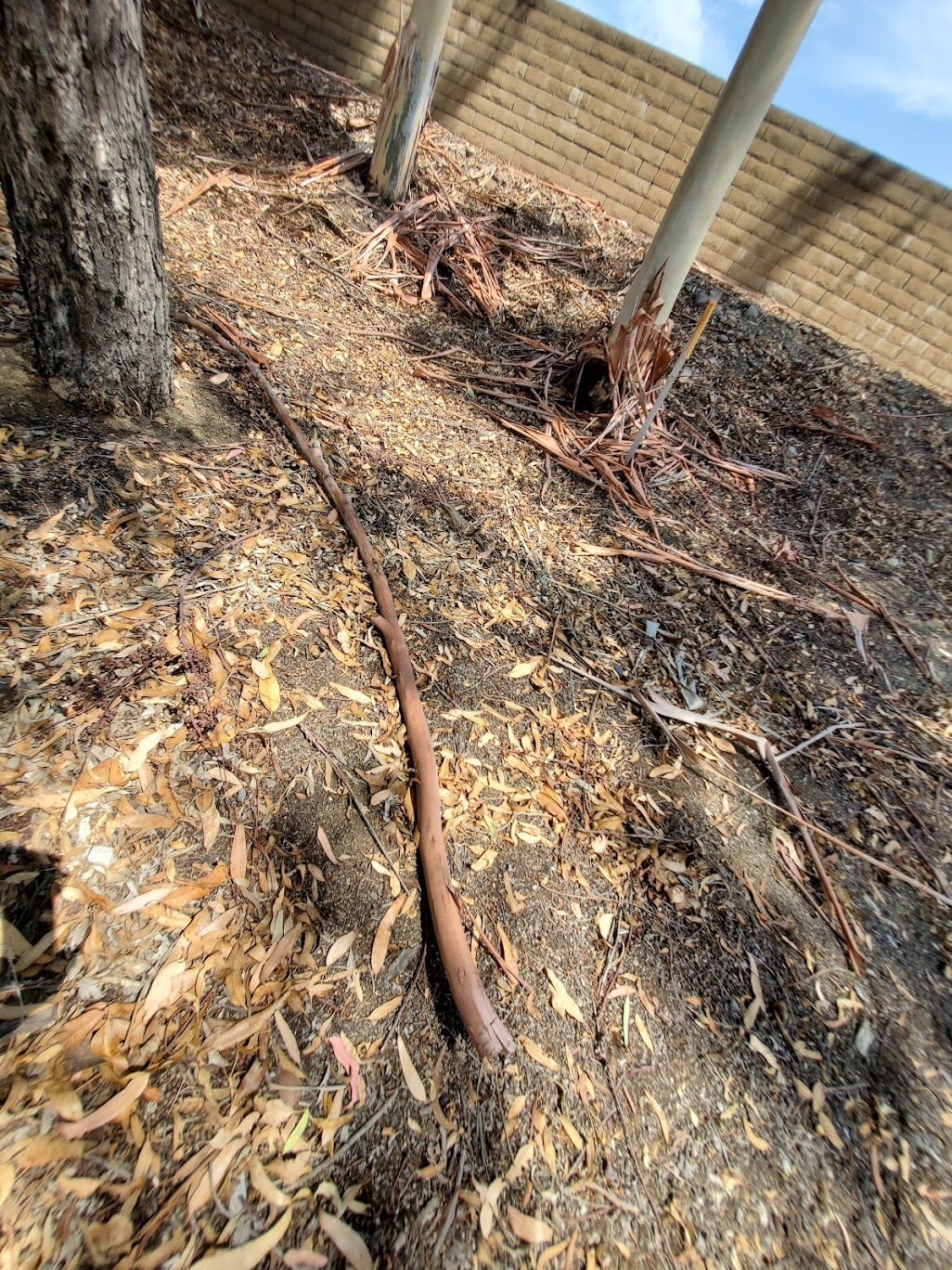
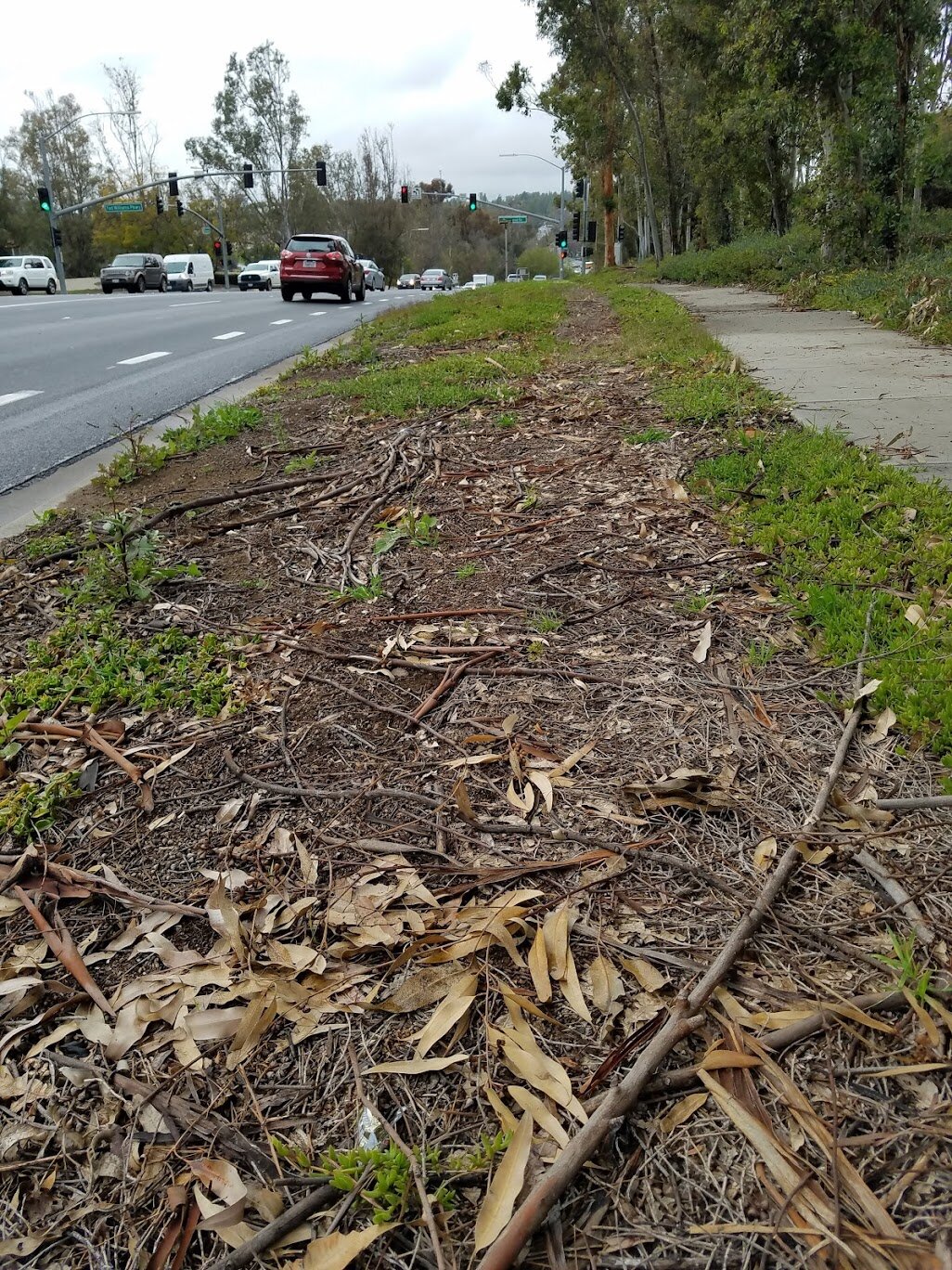
Falling Trees
Eucalyptus trees are prone to falling because they have shallow roots that don't do a good job of steadying the tree. Falling trees present a danger to people and property. Large eucalyptus trees have fallen along both Twin Peaks Road (LMD 83-1) and Espola Road (LMD 86-1) in the past few years.
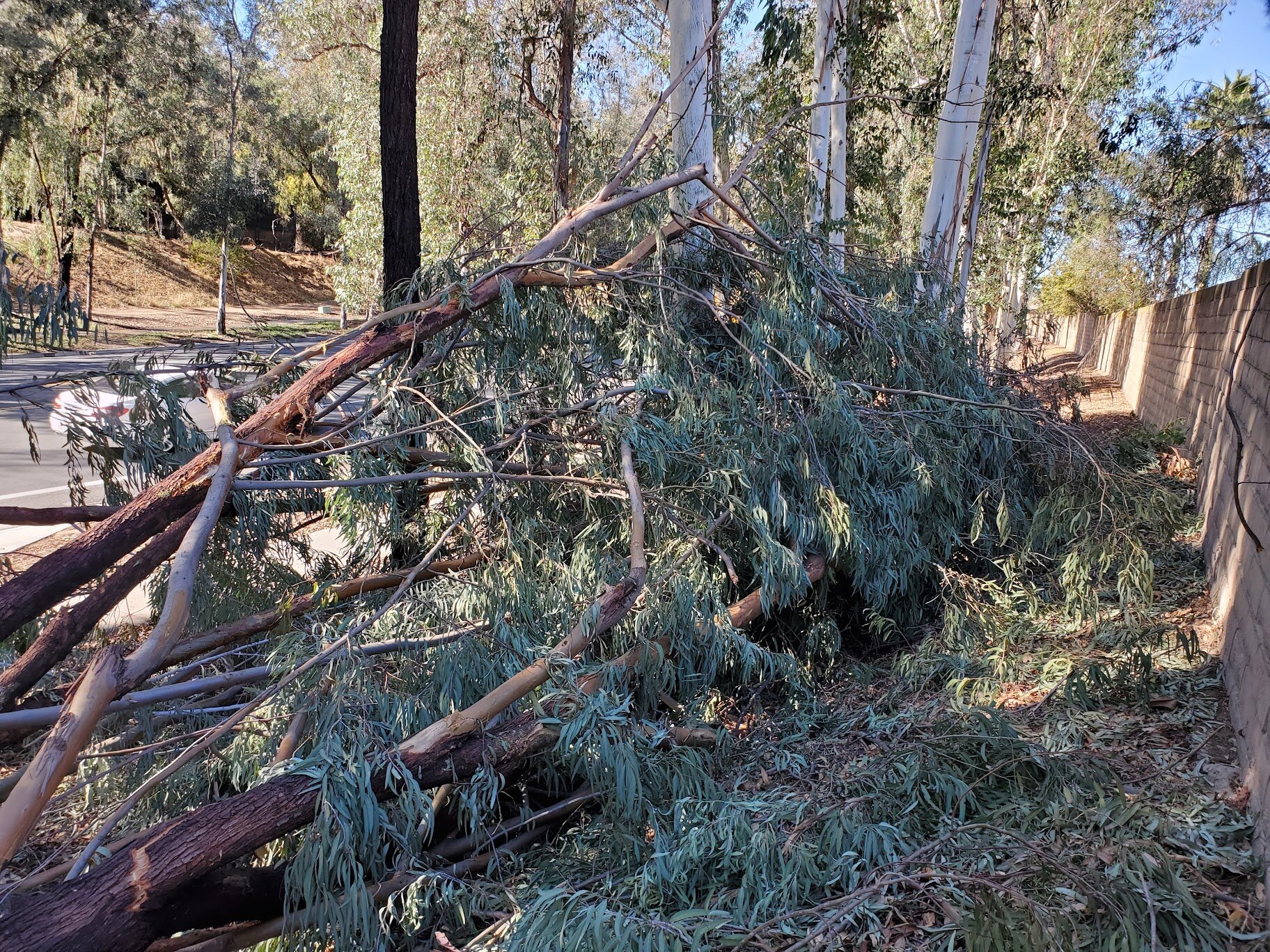
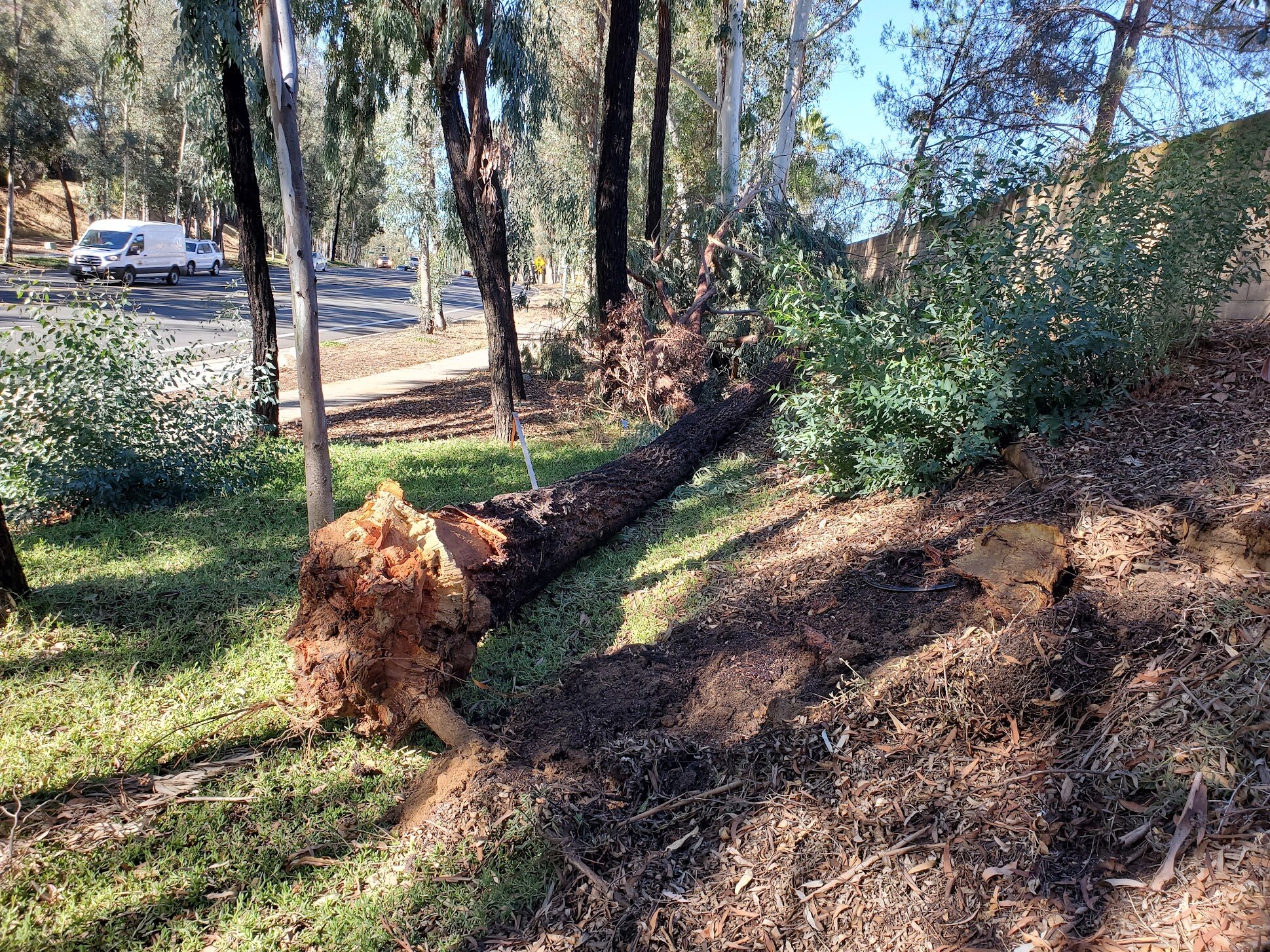
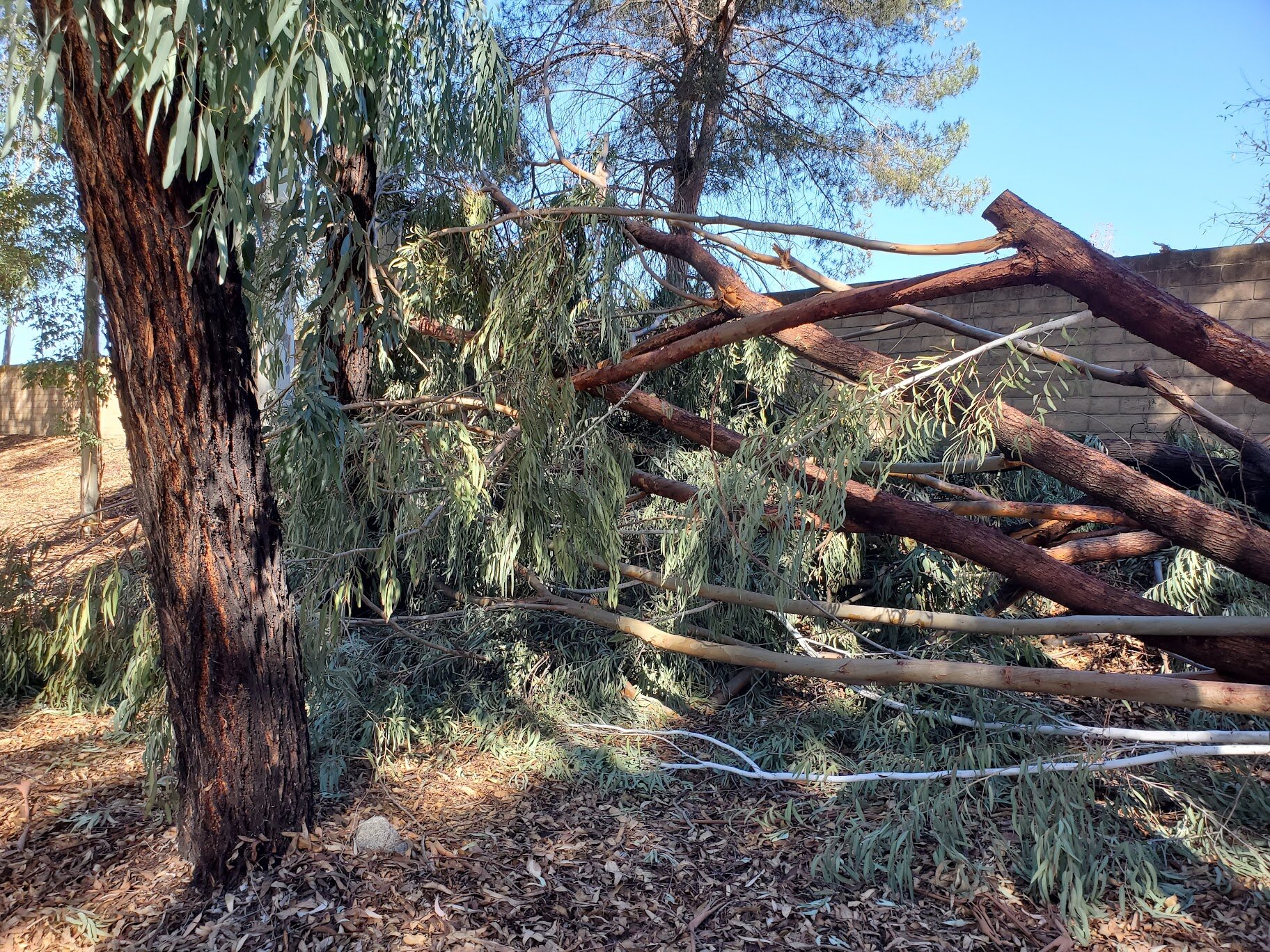

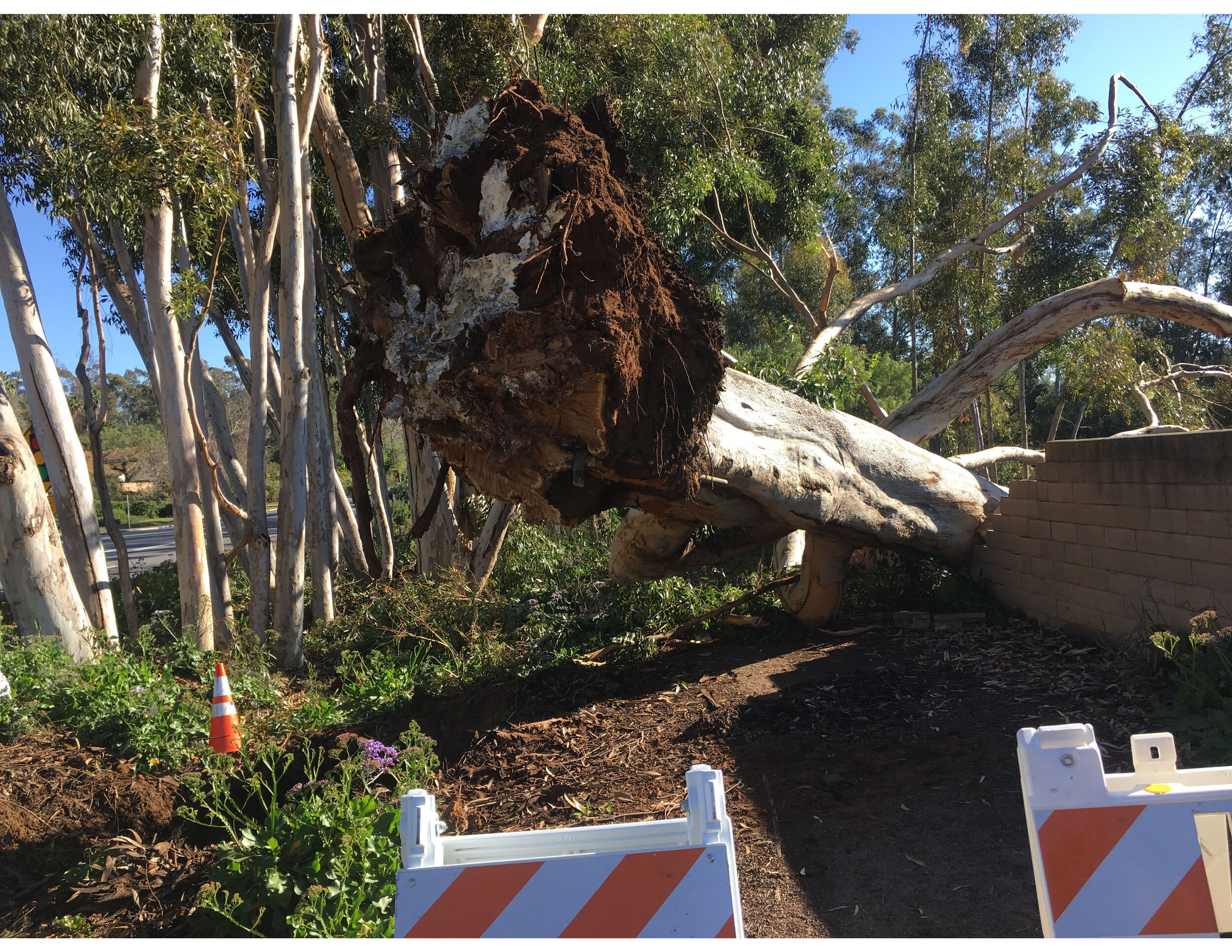
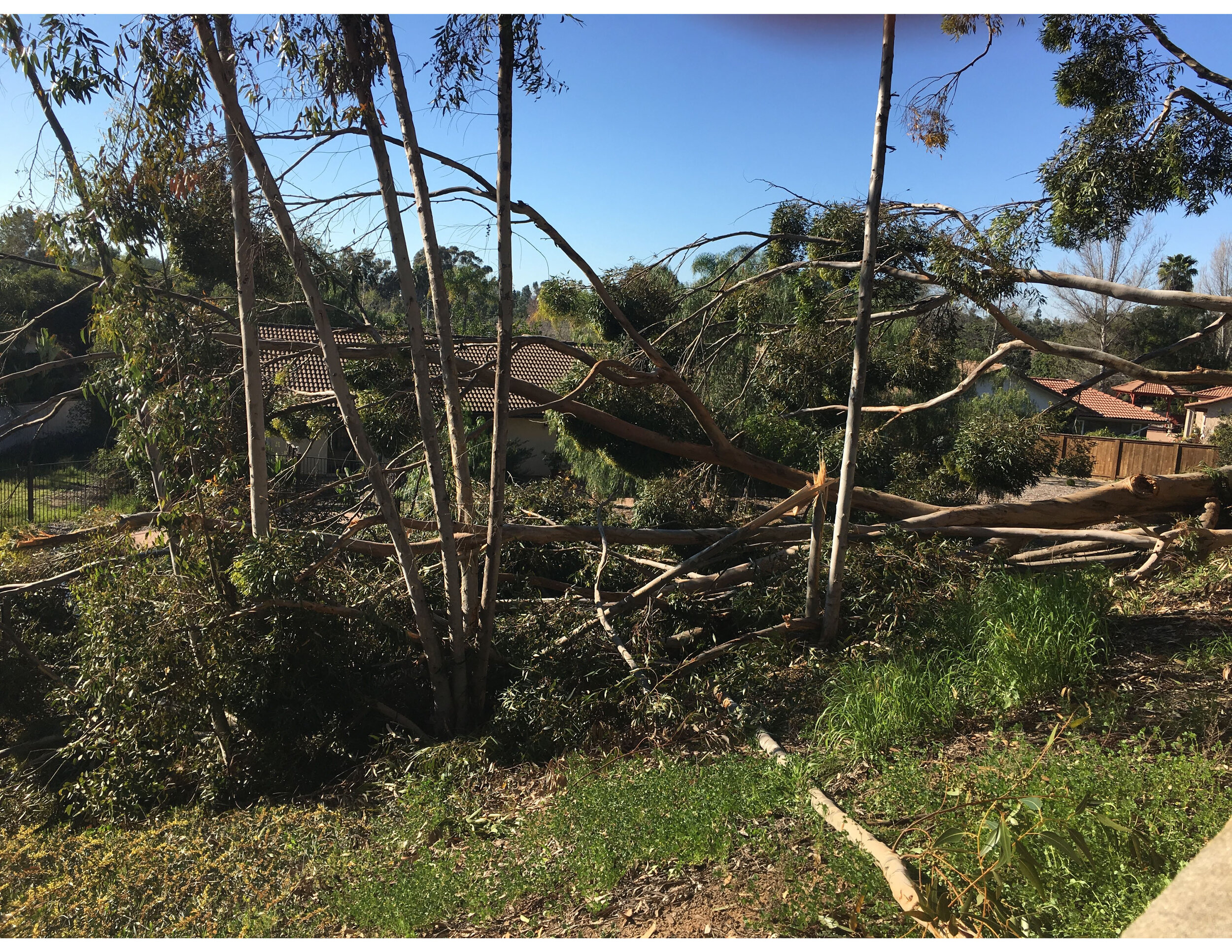
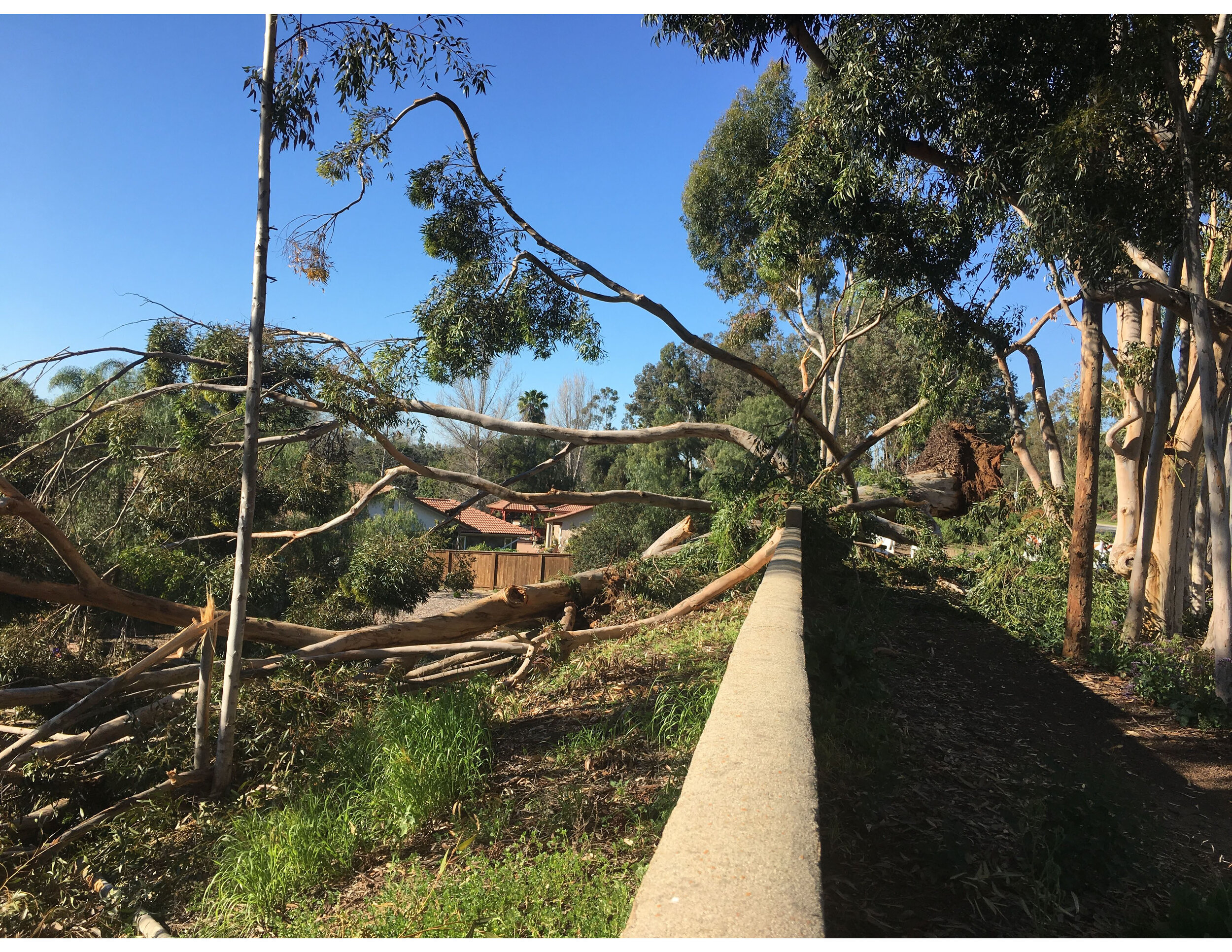
Tree Sprouts and Tree Density
When the eucalyptus trees along Twin Peaks and Espola roads were planted more than 30 years ago, there were far fewer trees than exist today. Over the decades, the shallow roots of the growing eucalyptus trees have led to new sprouts or “volunteers” so that today, the trees have multiplied to over 2400 trees along Twin Peaks Road and over 1400 along Espola Road. Sprout trees can be identified by their smaller diameter (generally below 8 inches). New sprouts occur continuously. Too many trees create a tree density that promotes disease (particularly the ability of invasive pests such as beetles to jump easily from tree to tree), competition for water (which results in unhealthy trees and falling branches), and development of a continuous fire canopy along the primary fire escape routes for north Poway residents.

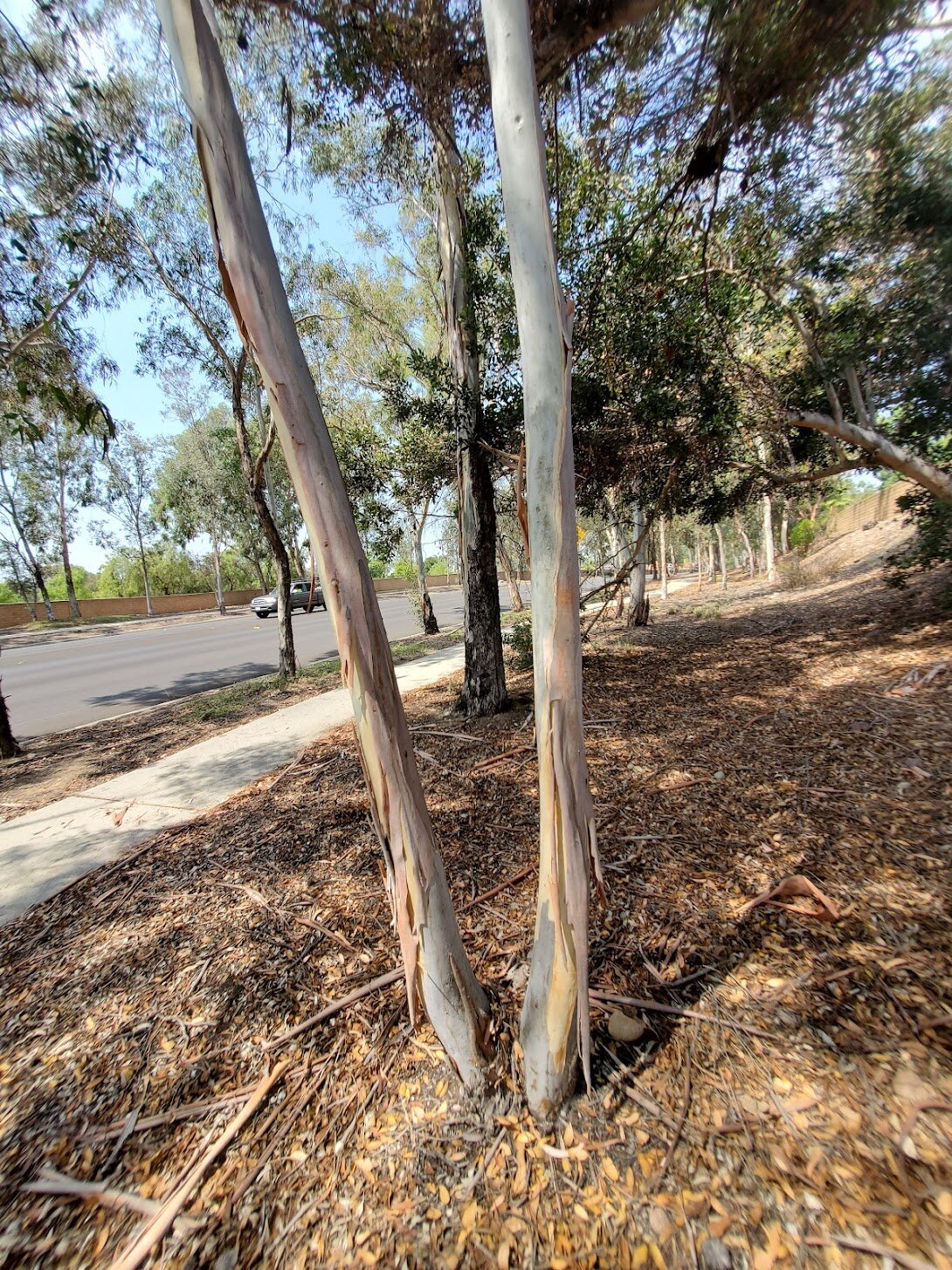
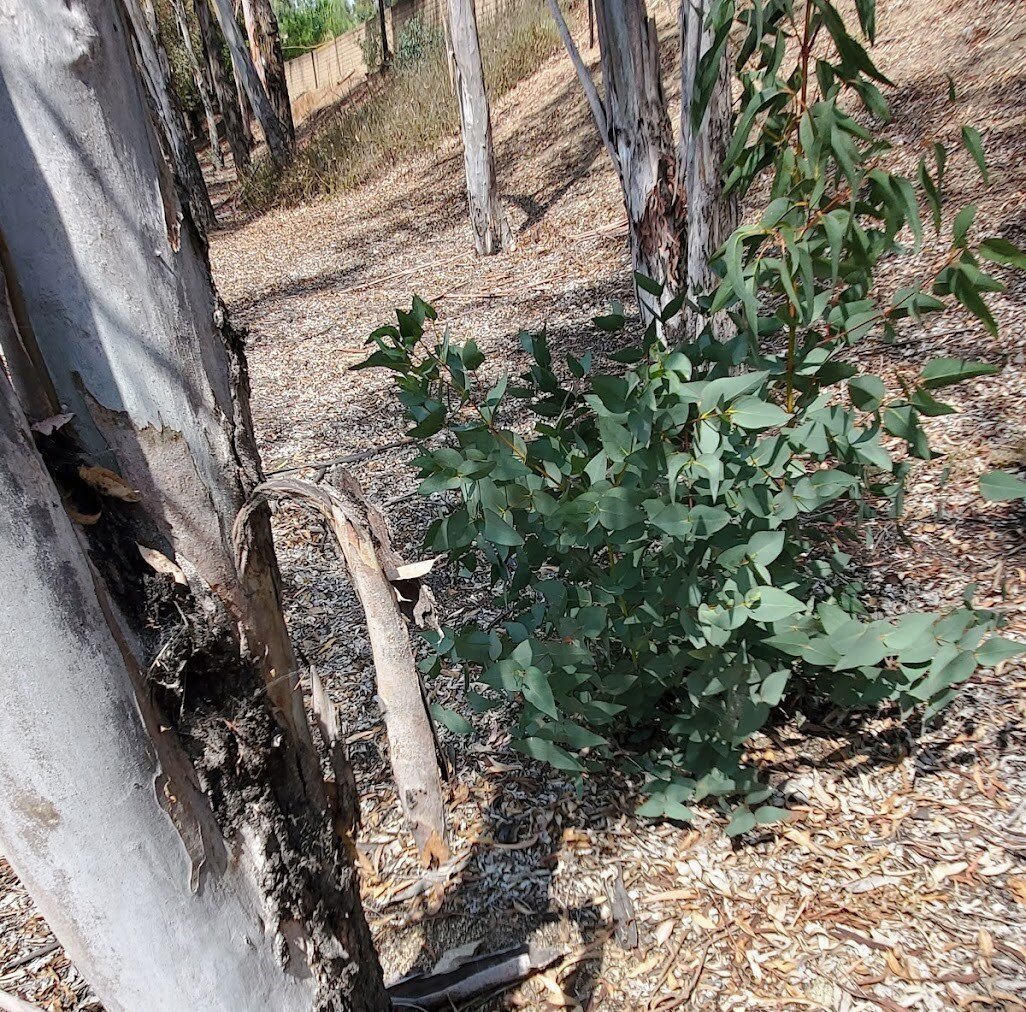
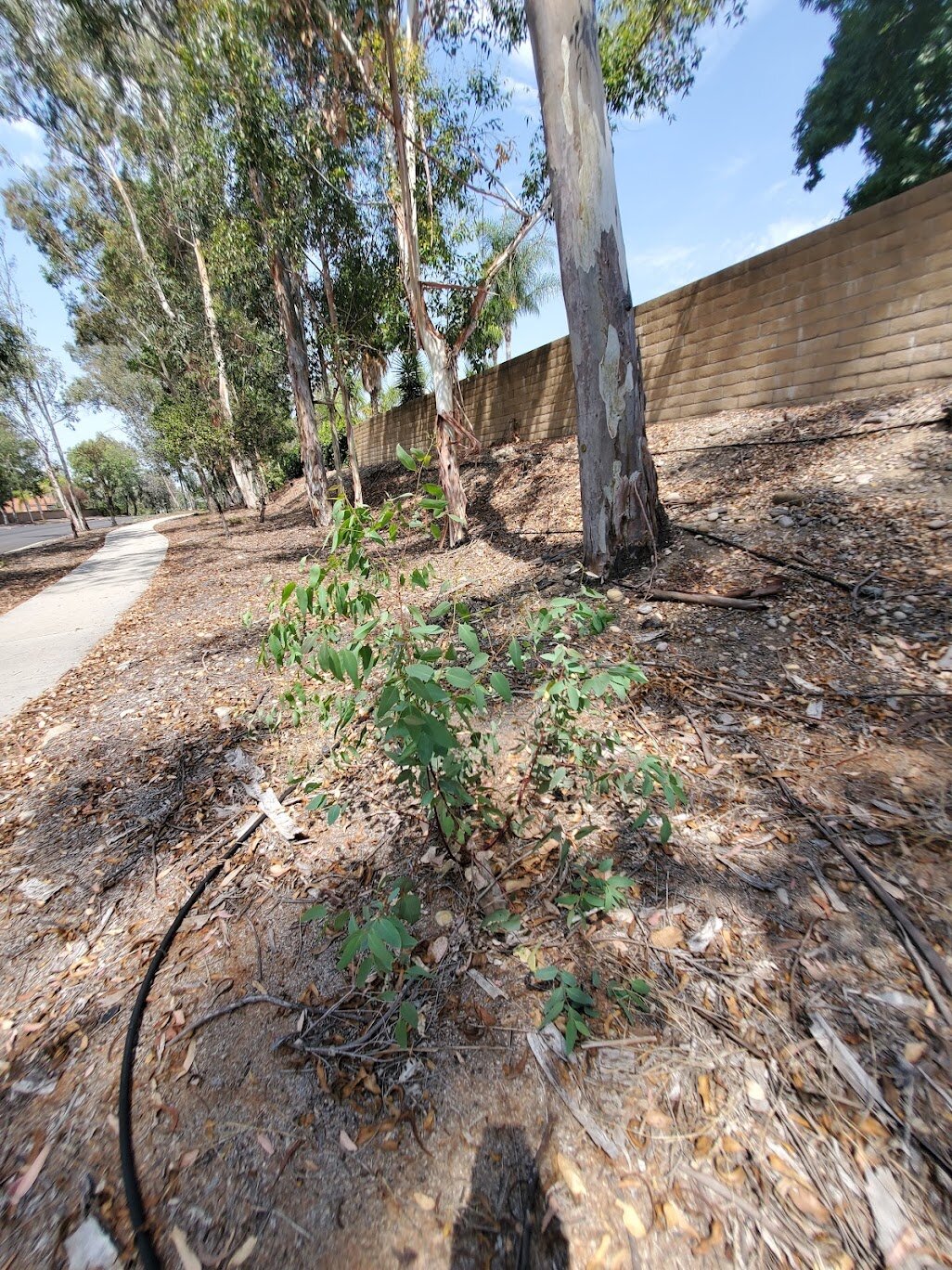
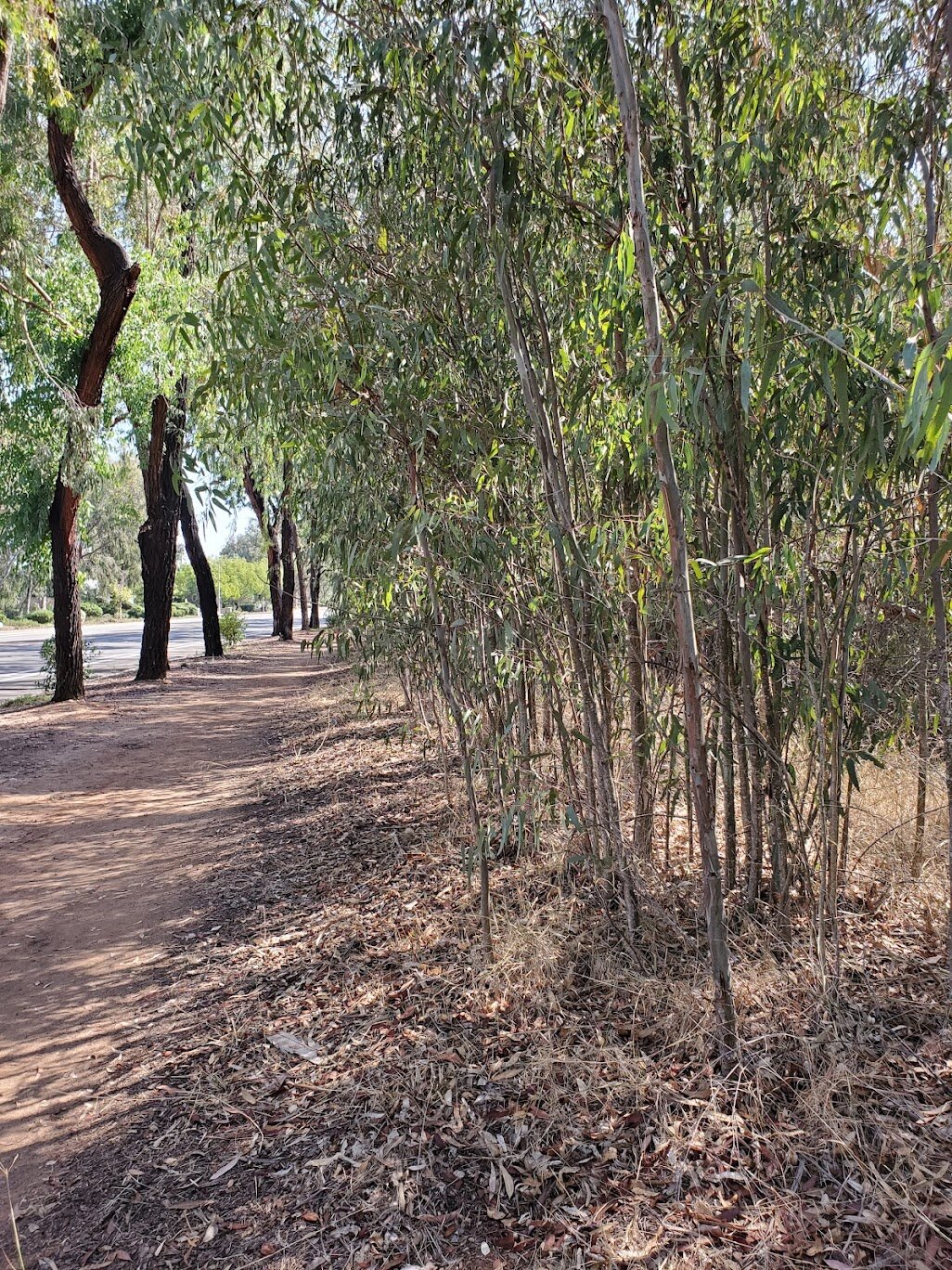

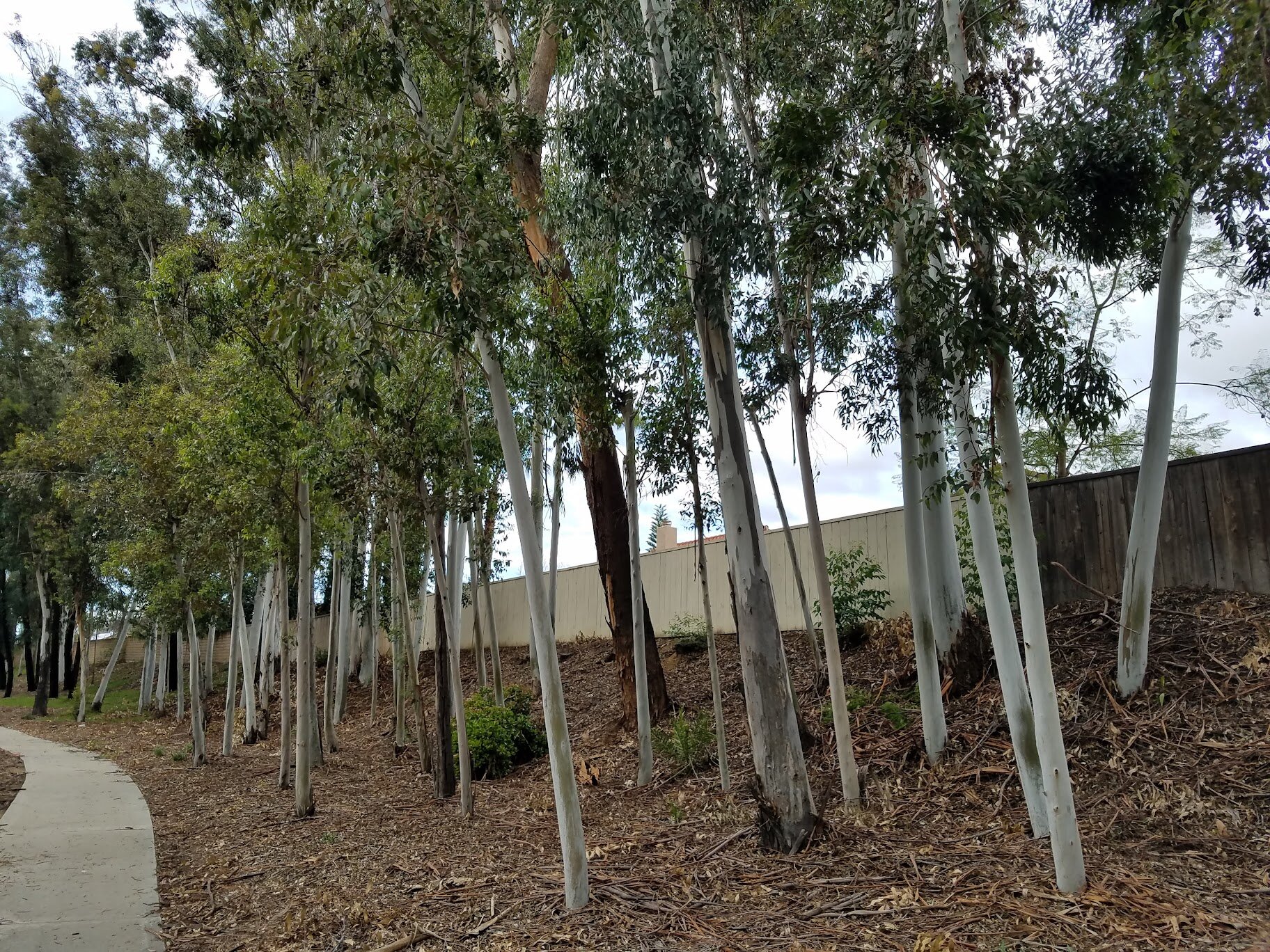
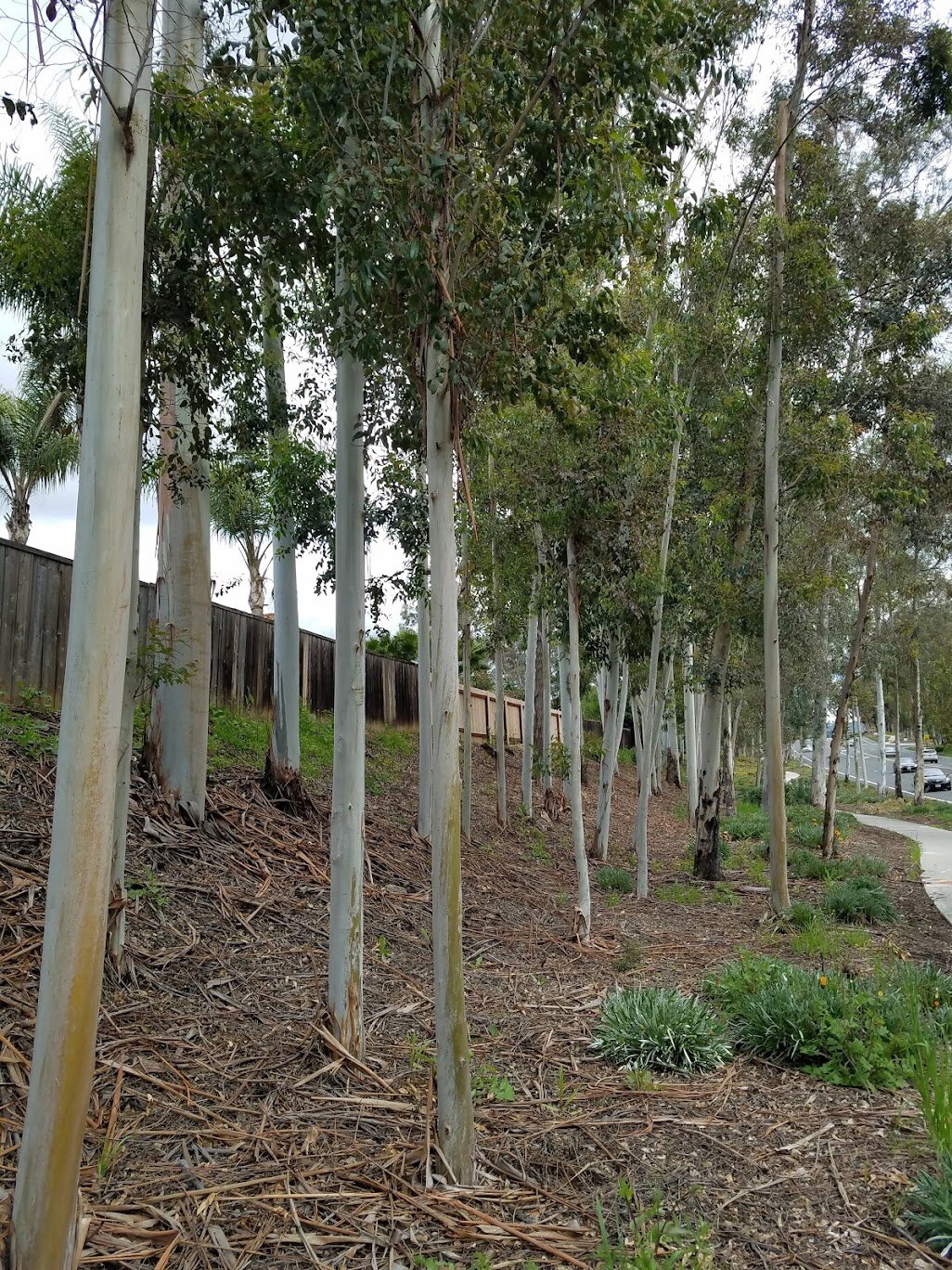
Poorly Structured and Diseased Trees
Eucalyptus trees, both young and old, often suffer from poor trunk and branch structure. They can be too heavy on one side or have precarious trunk and branch shapes. Many of the trees along Twin Peaks and Espola roads have poor structures that can lead to falling branches and trees. In addition, many of the trees in the LMDs have been affected by both beetle infestations and drought resulting in diseased and weak trees. Diseased trees also present falling and fire hazards.
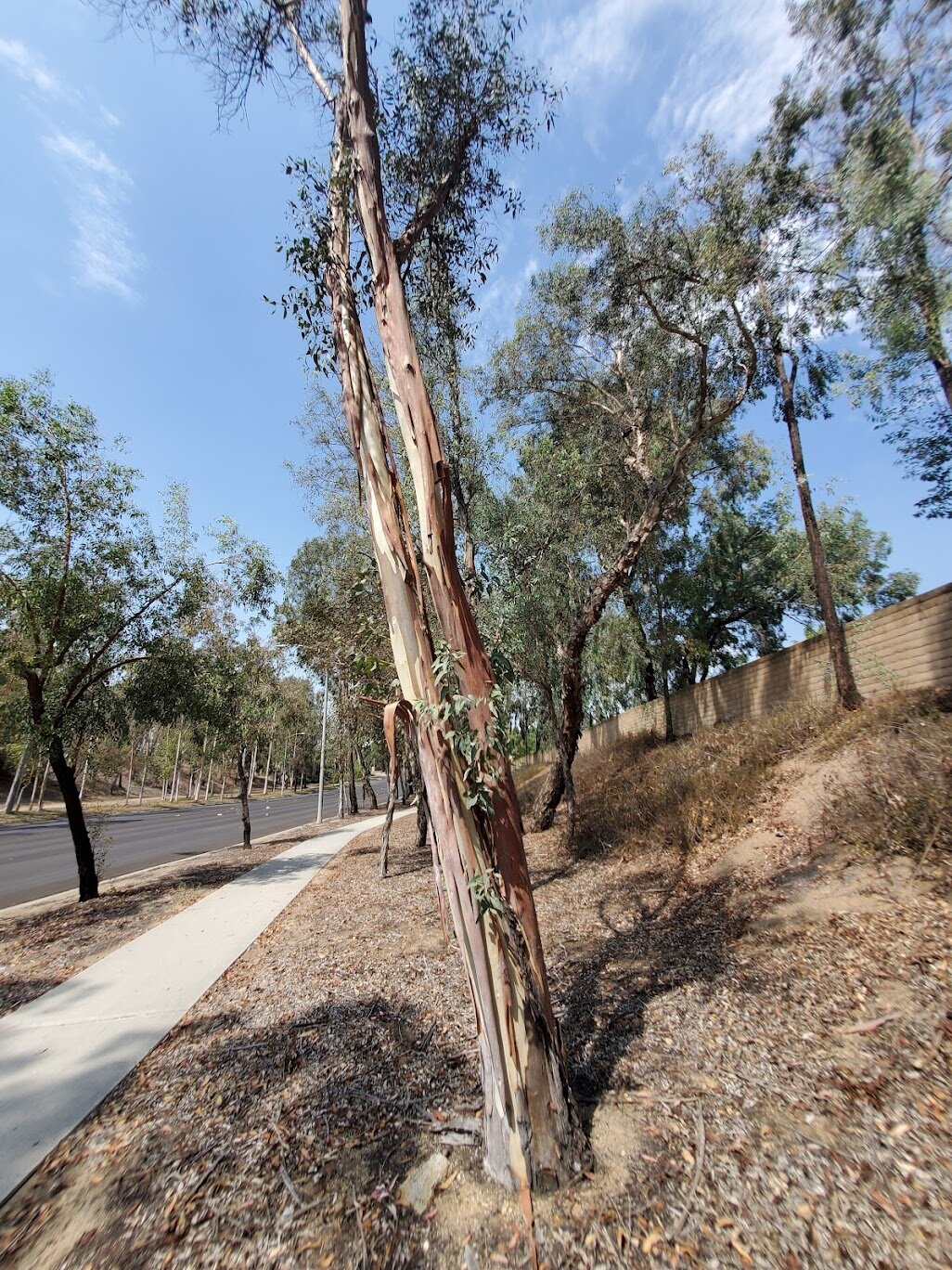
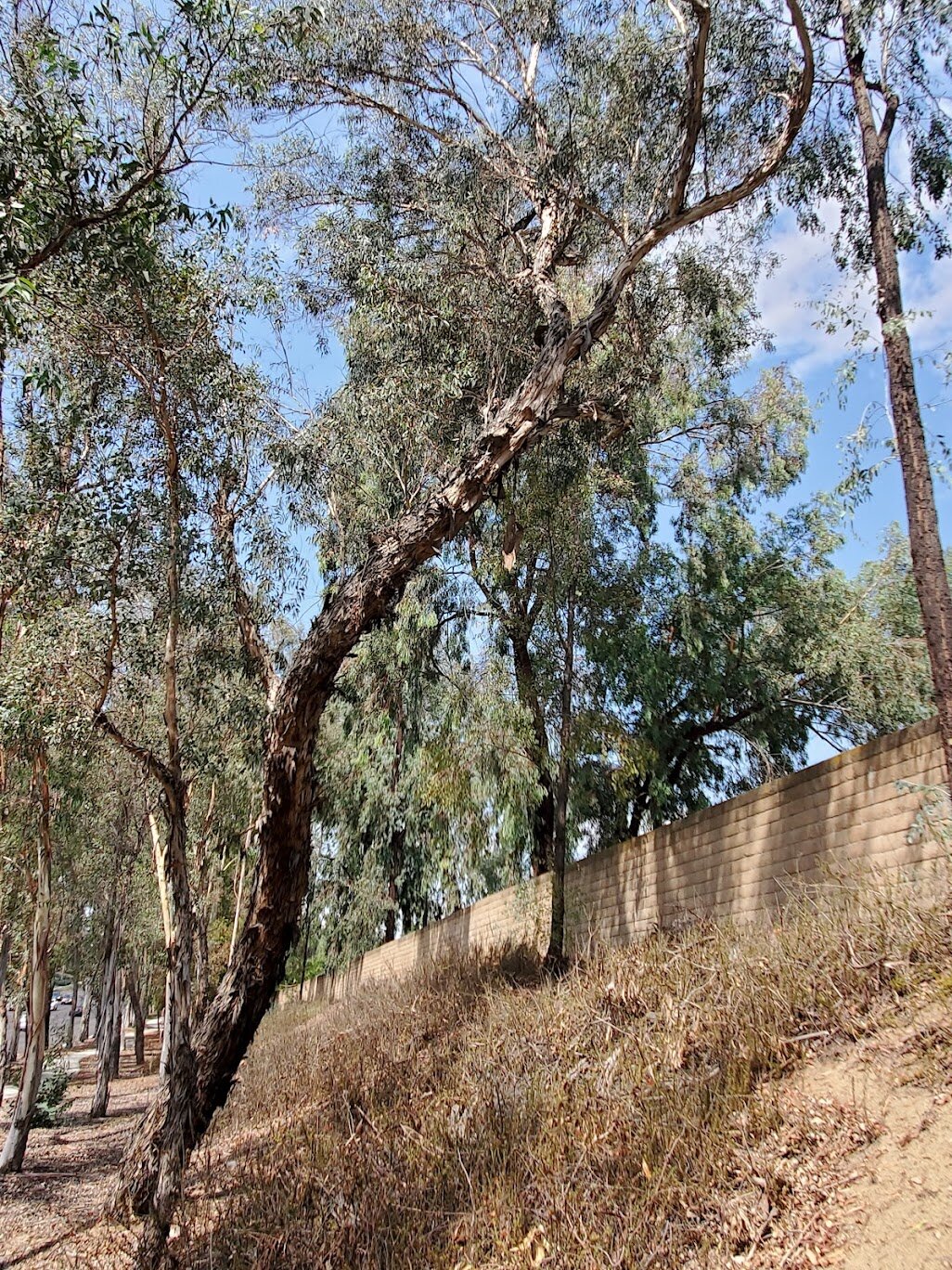
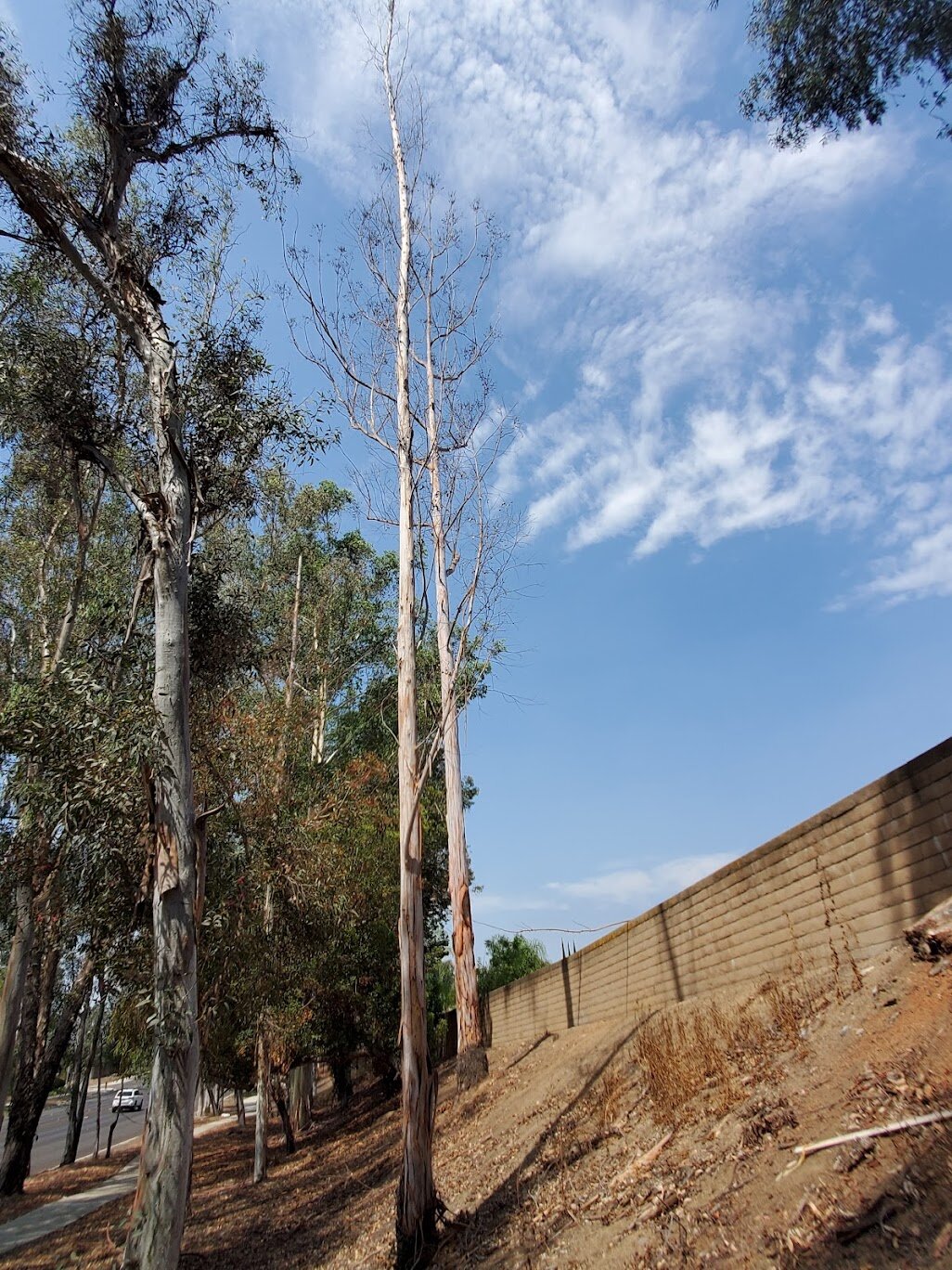

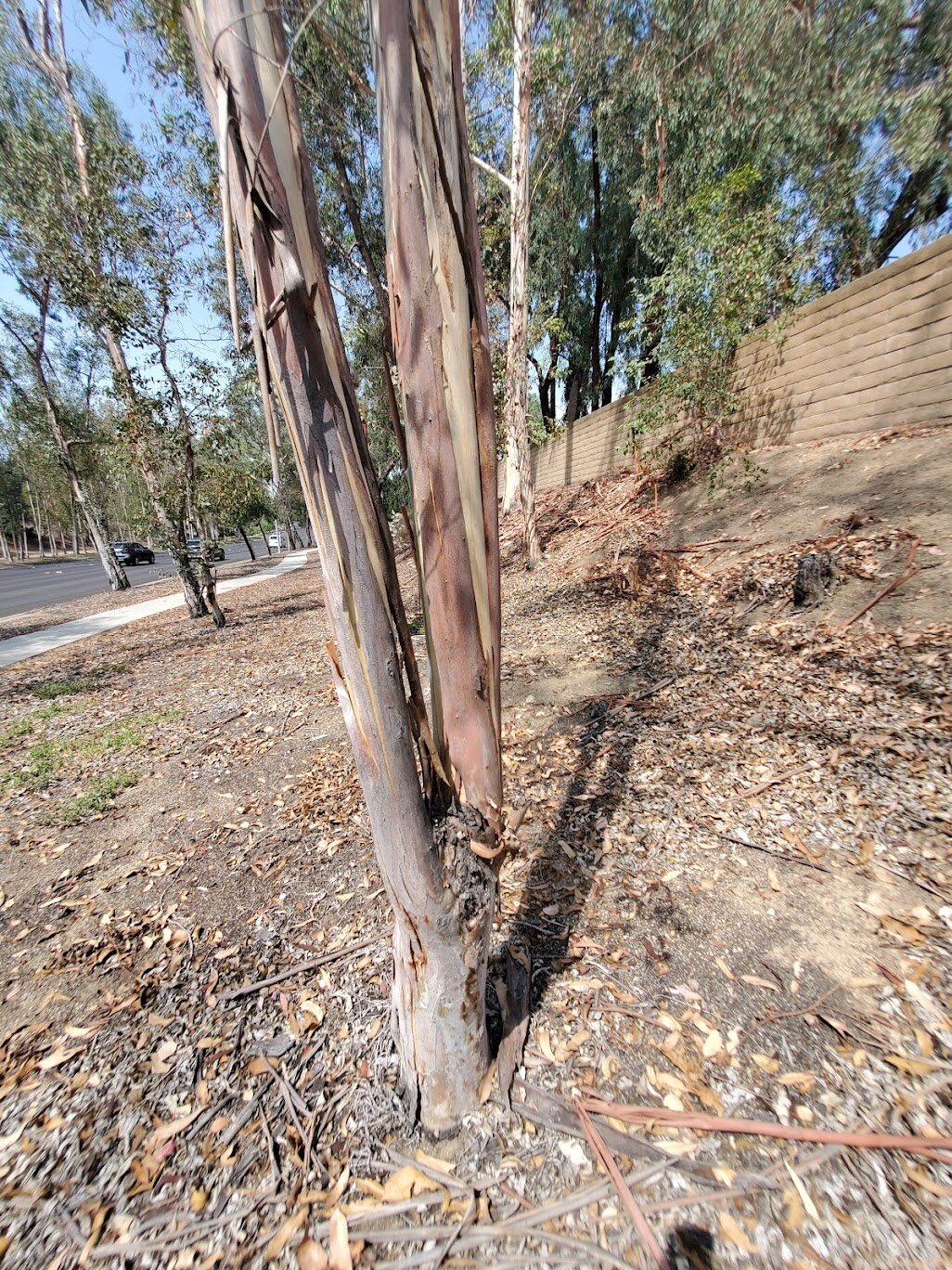
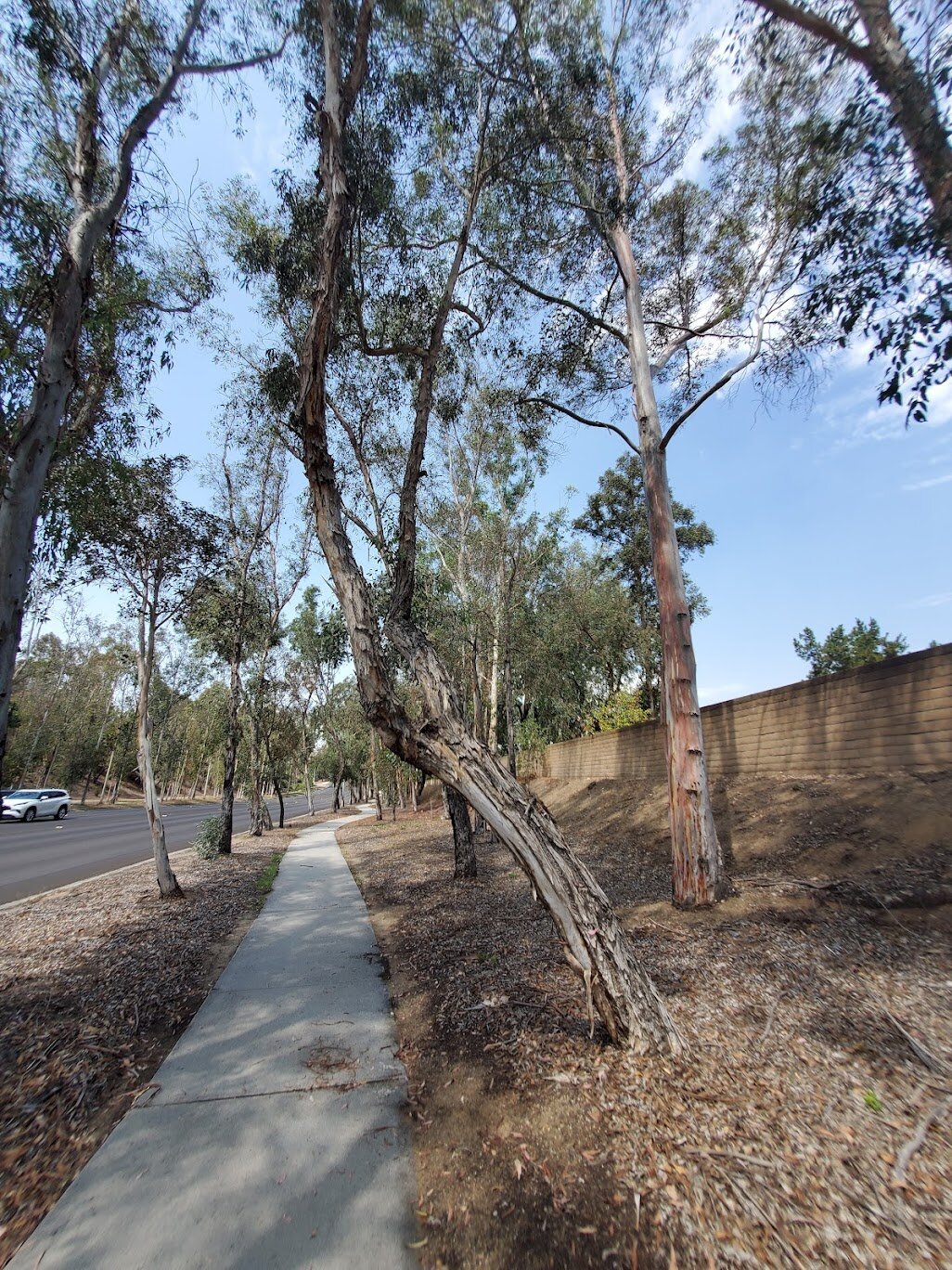
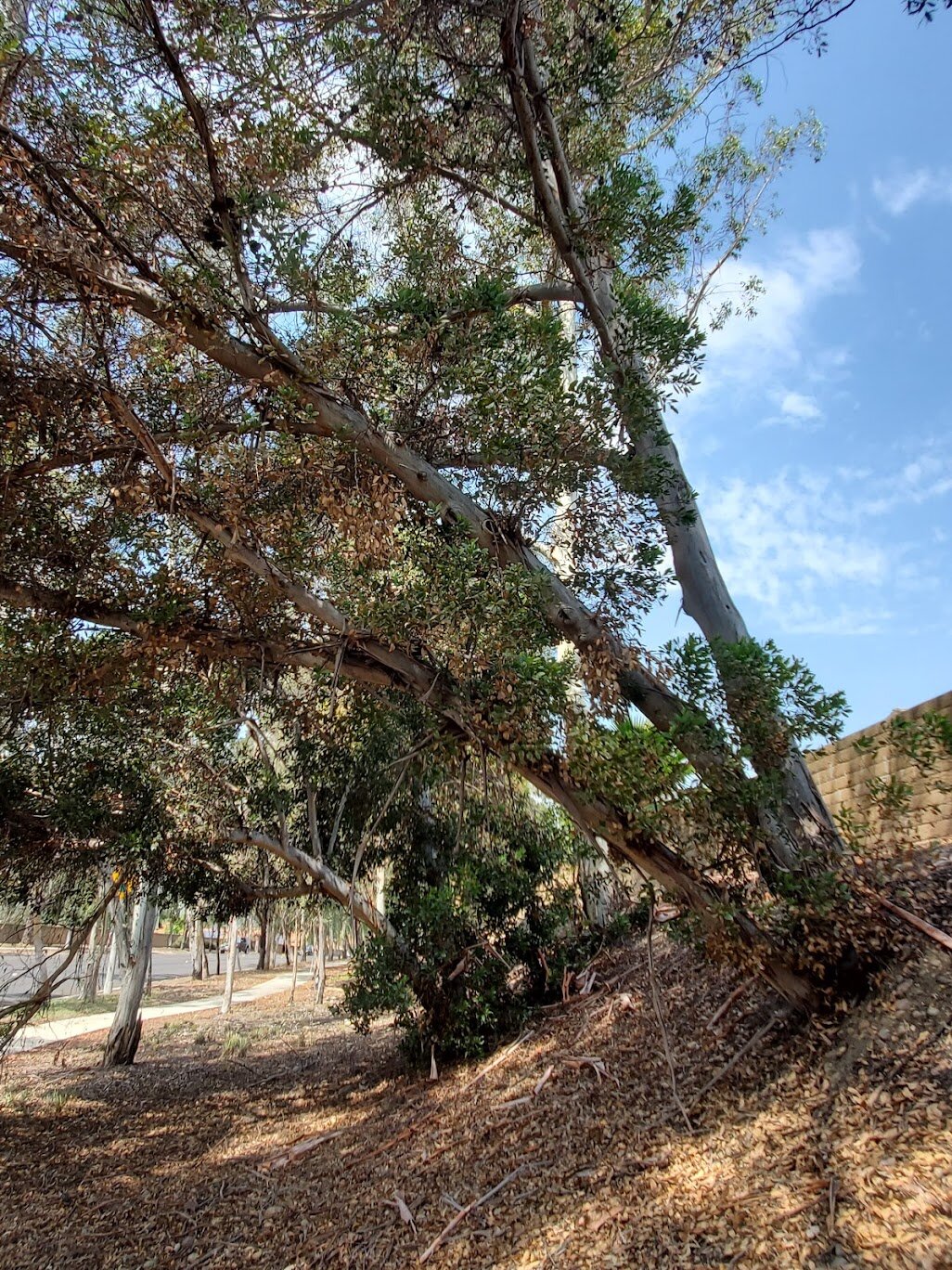
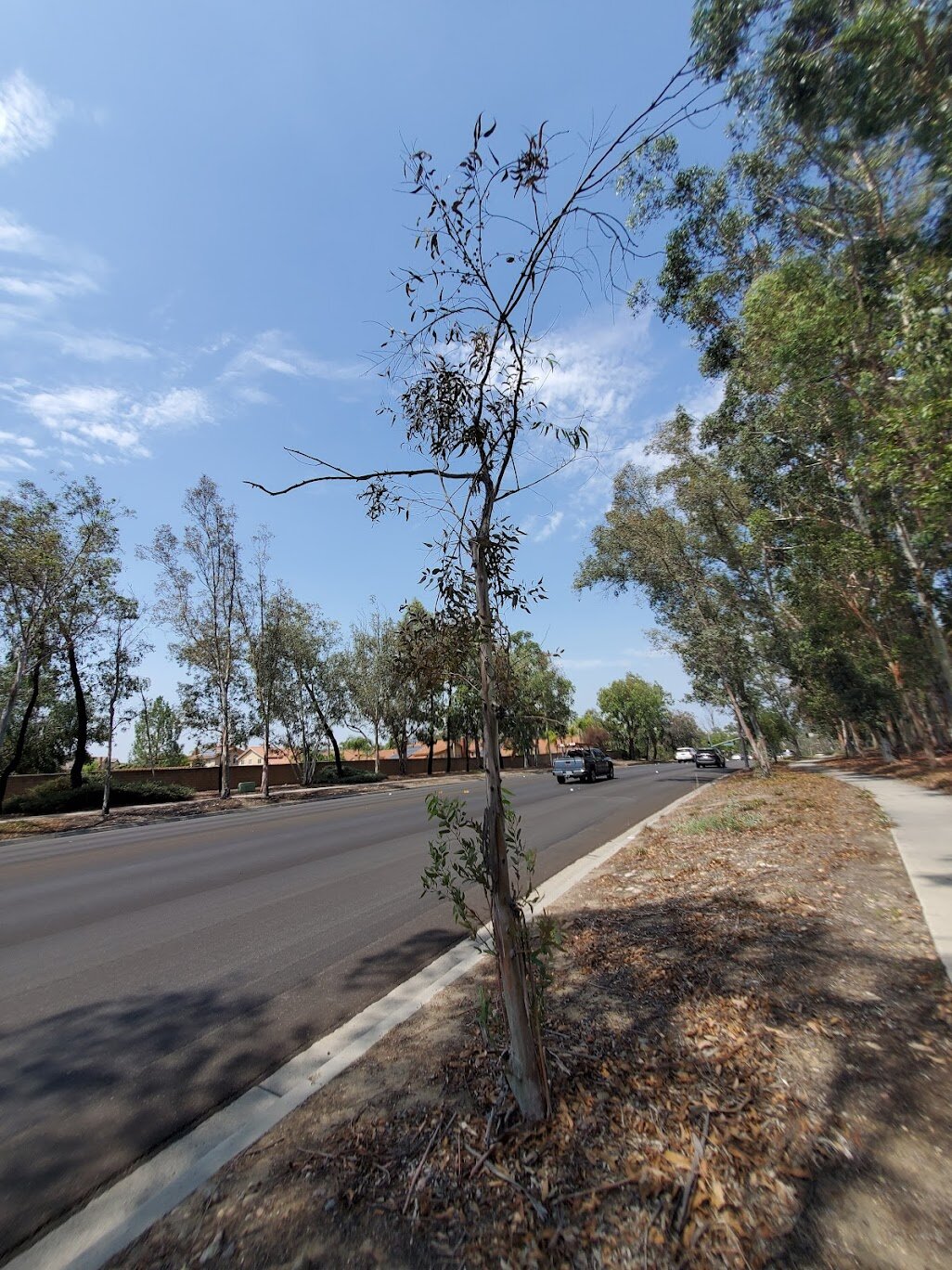
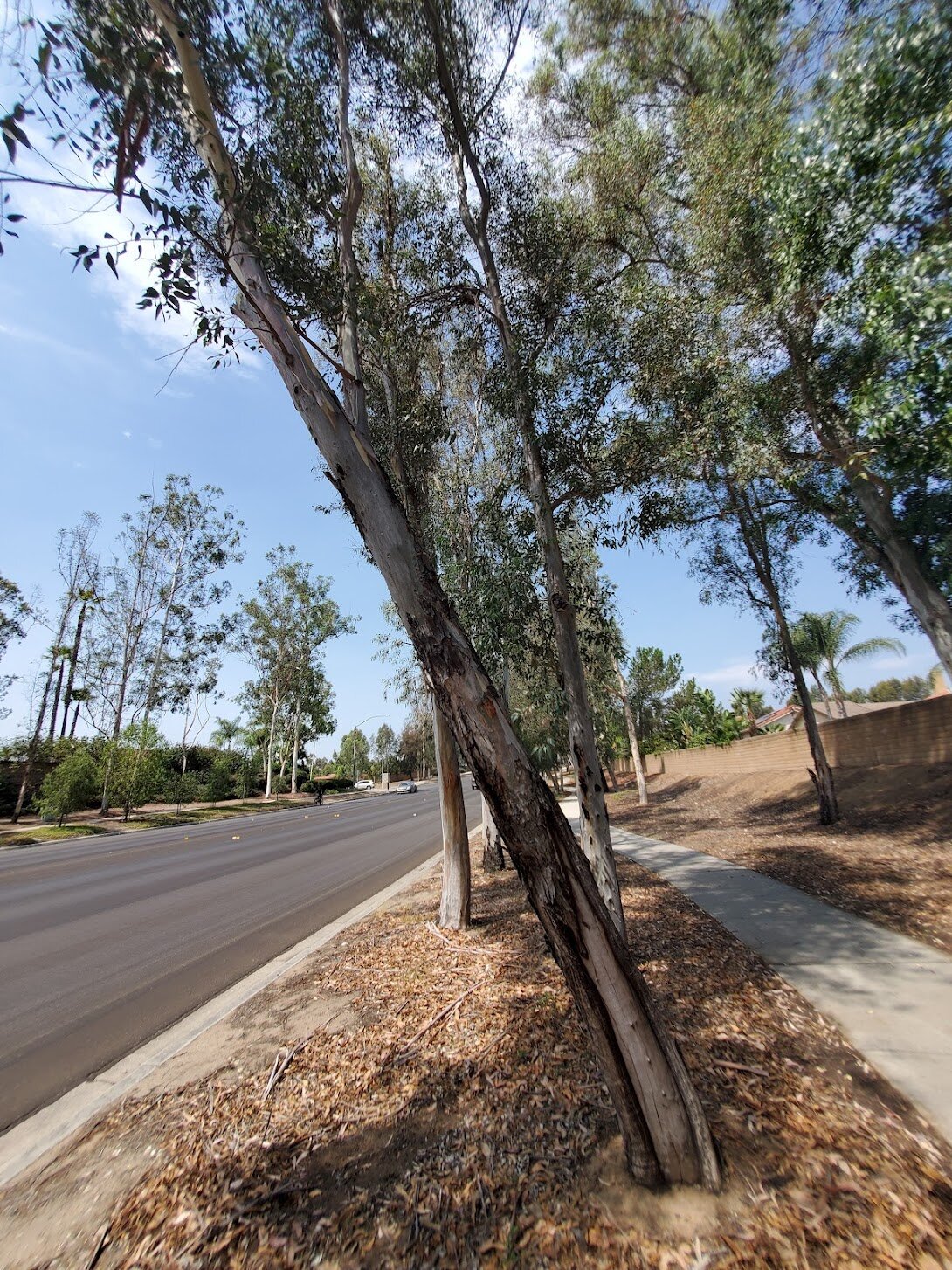

Overgrown Fire Canopy
Twin Peaks and Espola roads are the primary access roads in north Poway to the west (I-15). During a major fire (as occurred in and near Poway in 2003 and 2007), thousands of residents living along these corridors will depend on clear roadways to evacuate. And fire fighters will need access to protect our homes and city. As the eucalyptus trees along these roads have grown and multiplied over the past 30 years, they have created a continuous tree canopy that can catch flying embers and provide fuel for a fire, endangering safety, property and firefighting efforts.
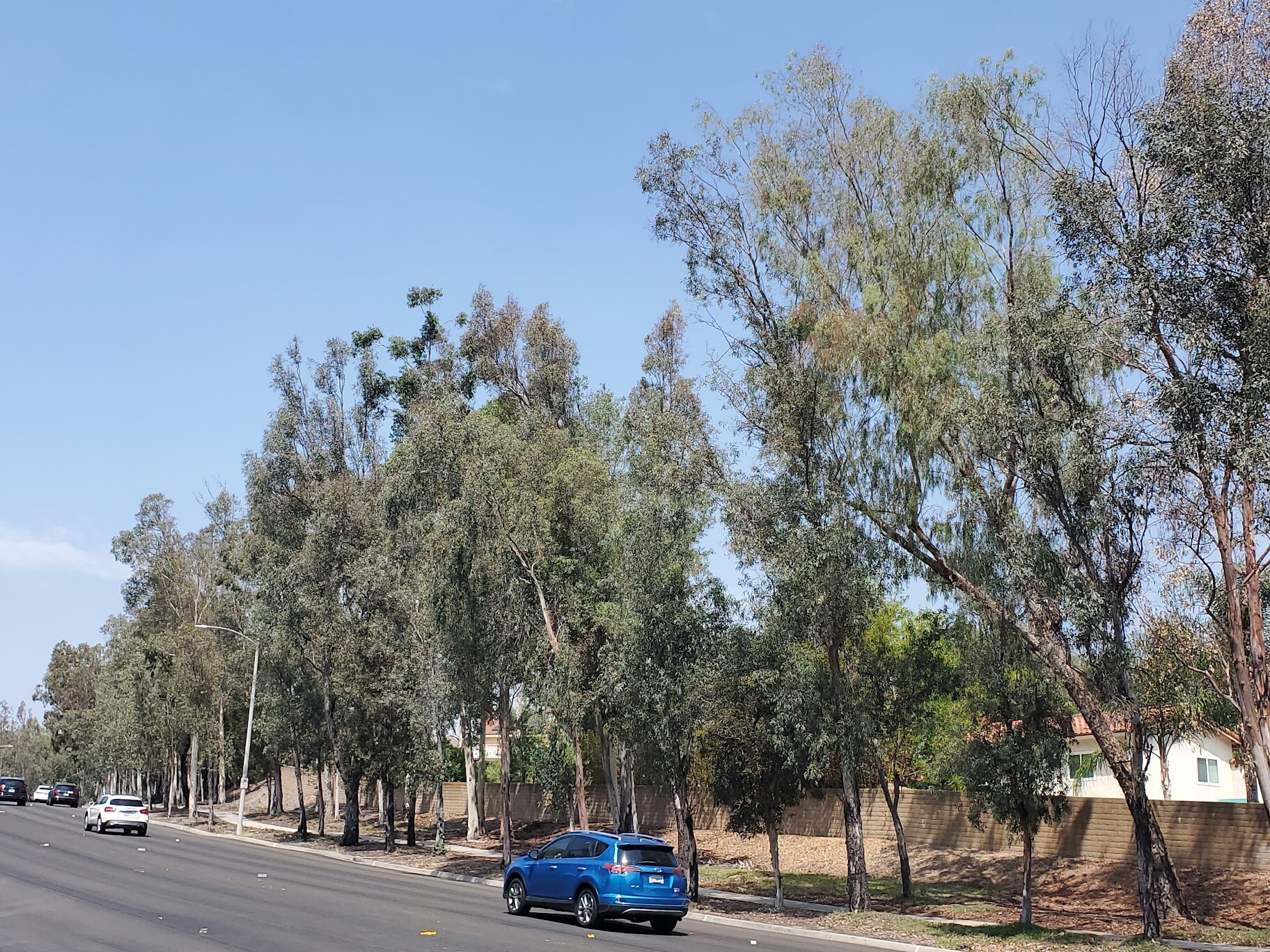
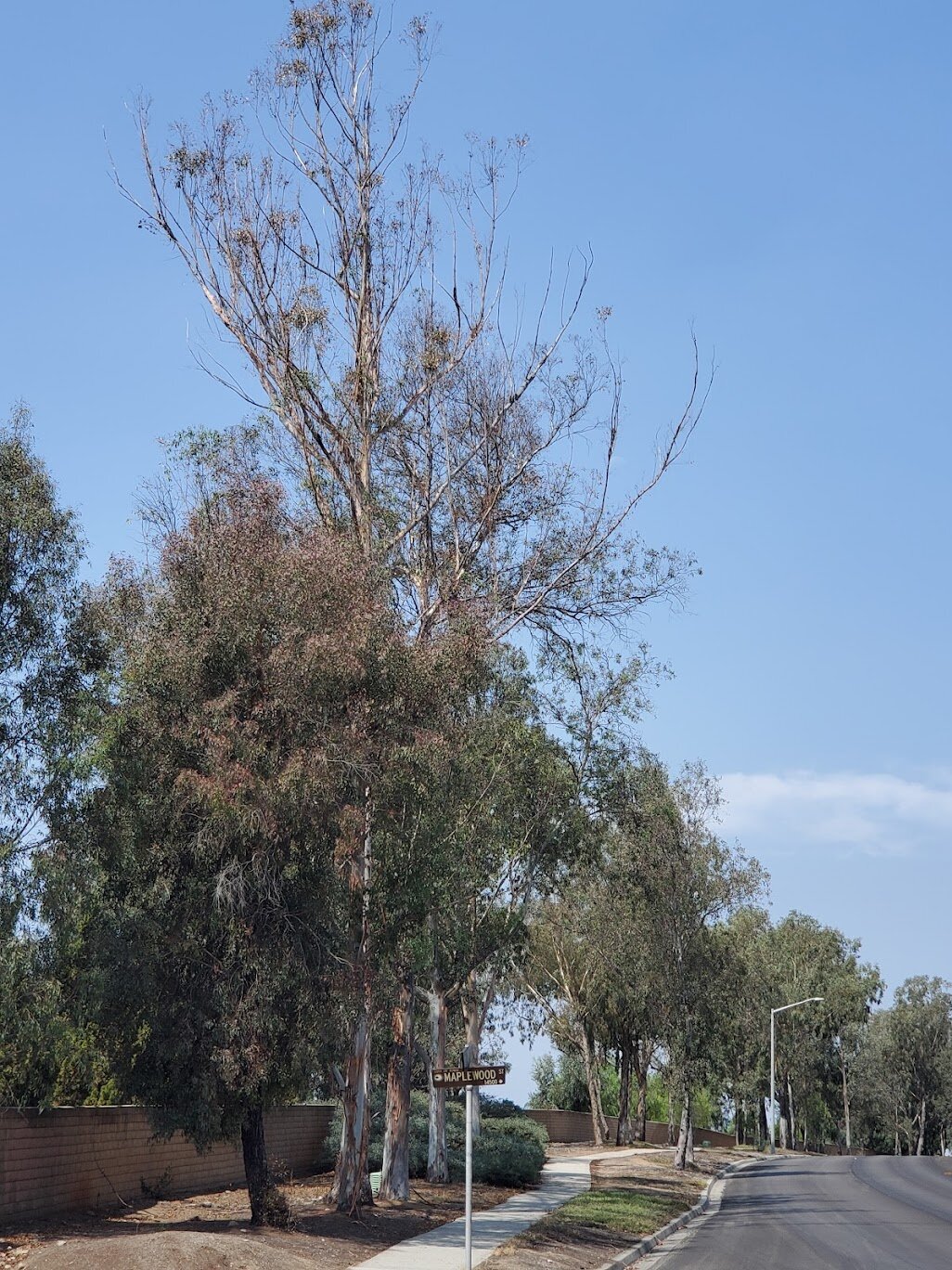

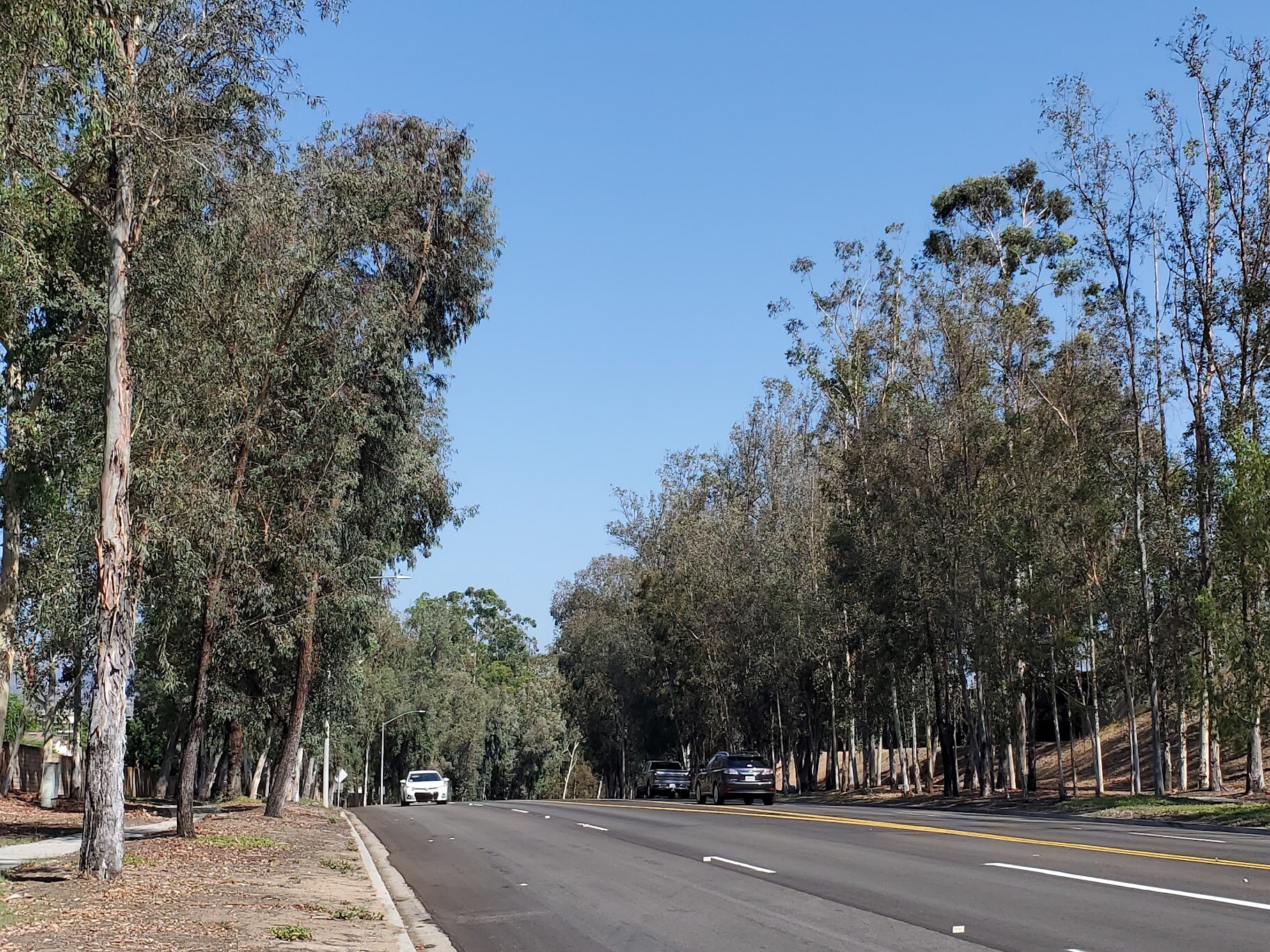
Lost Neighborhood Entrance Landscaping
Thirty years ago, the entrances to neighborhoods along both Twin Peaks Road and Espola Road were fully landscaped, providing appealing and welcoming common areas and reflecting a well-maintained community. Over the past decade, maturing vegetation, aging irrigation systems and increasing costs of water and labor without a corresponding increase in landscape maintenance revenues from the LMD has resulted in incremental reductions in landscape maintenance and watering over time. Today, landscape maintenance at the entrances to our neighborhoods is performed only once or twice a month (depending on the LMD) and largely focuses on repairs to the outdated irrigation system. It’s not surprise that we have lost all the landscaping at the neighborhood entrances. In its place, dirt, weeds and tree debris now welcome people to our neighborhoods and negatively impact our property values.

